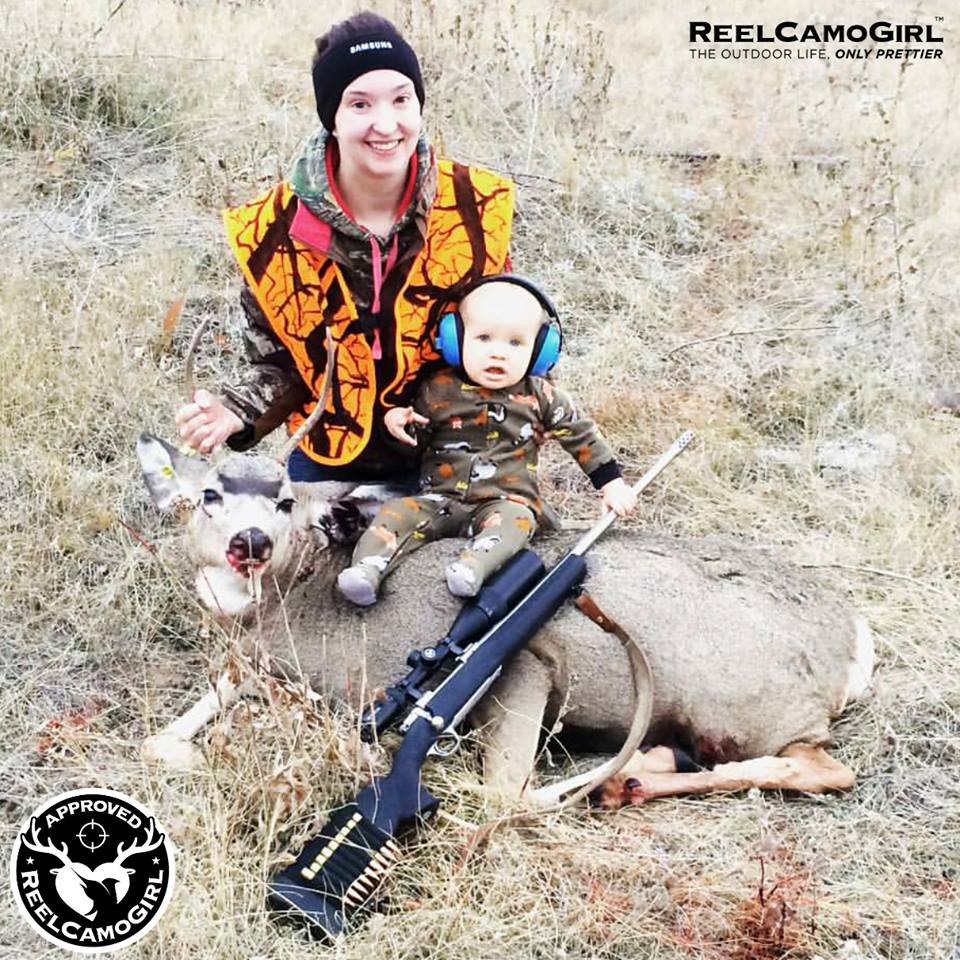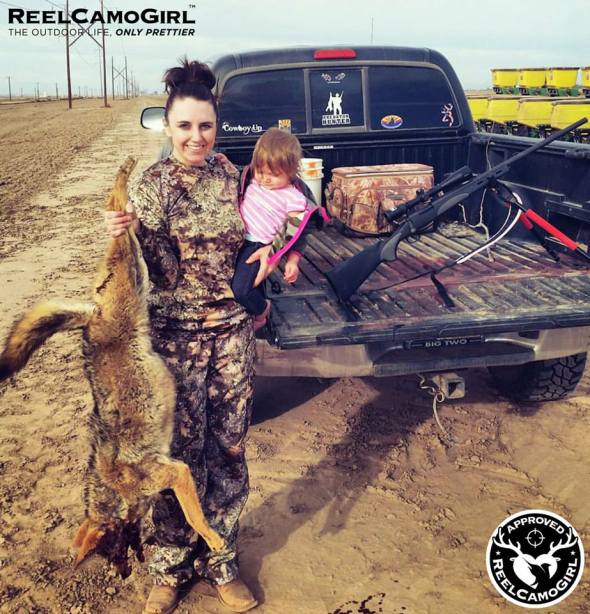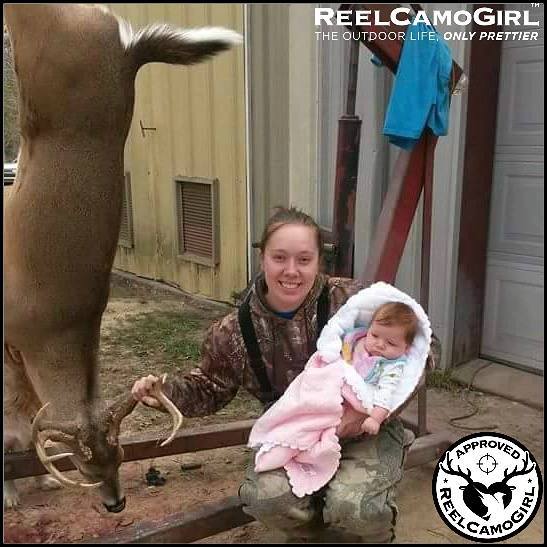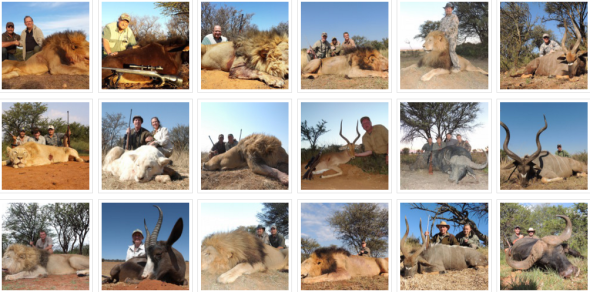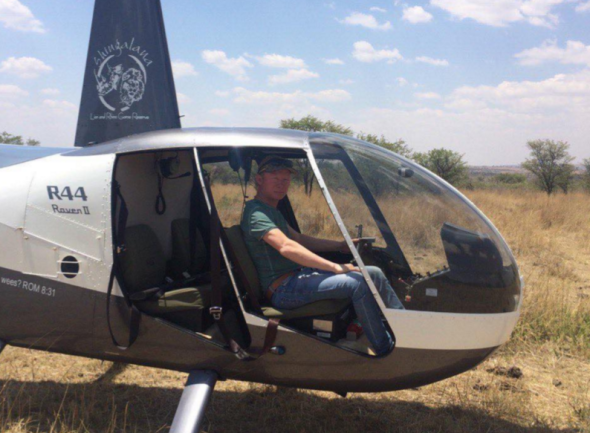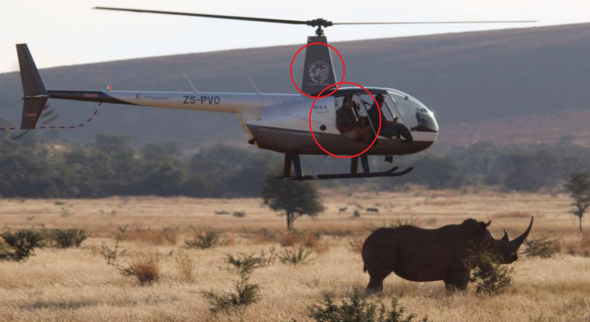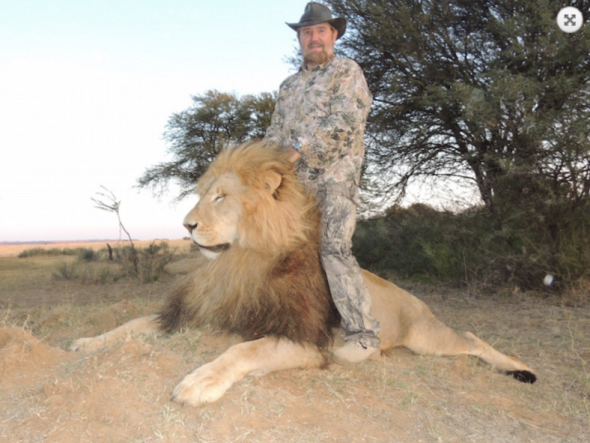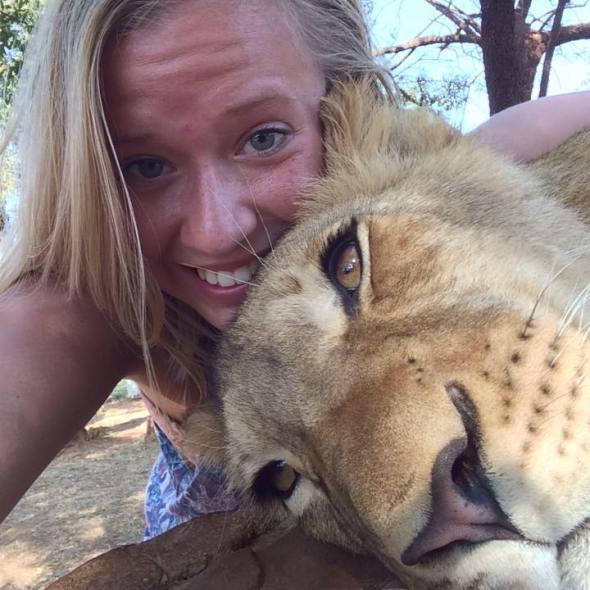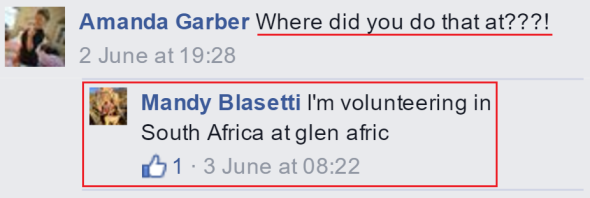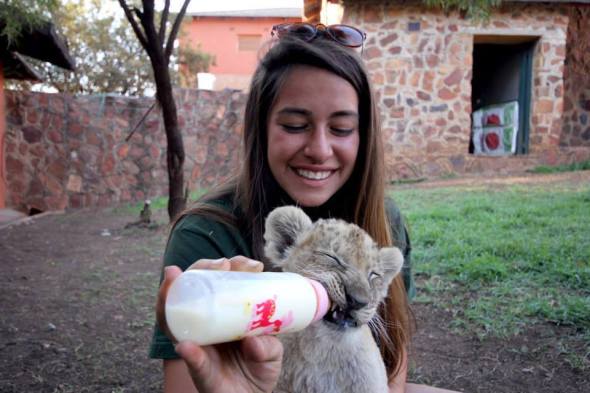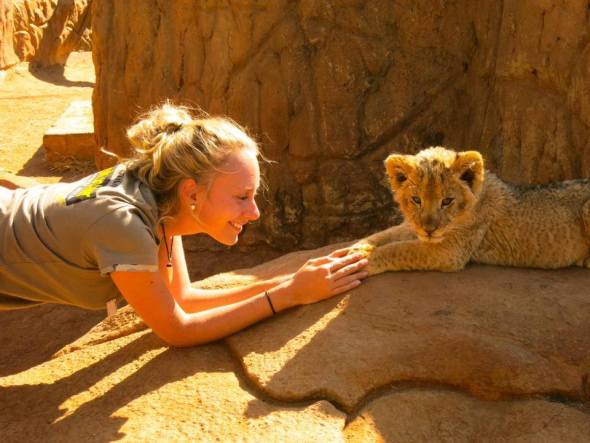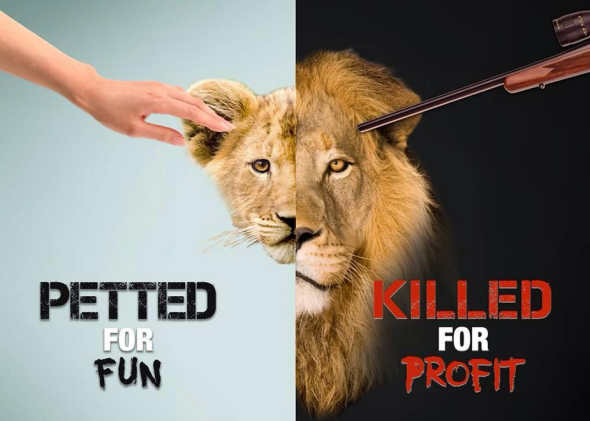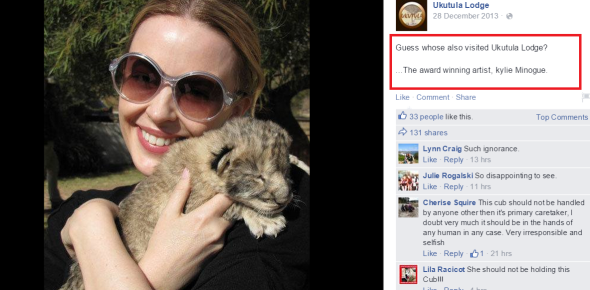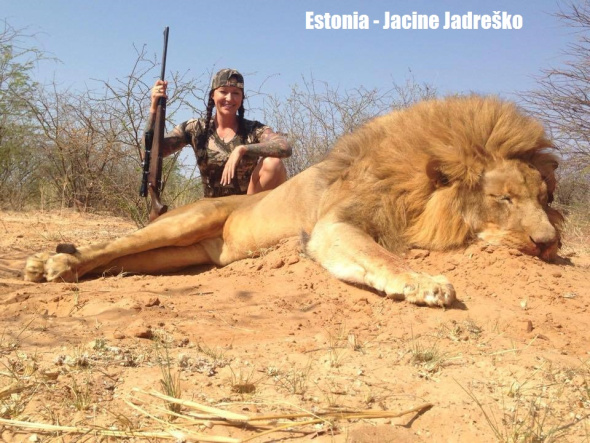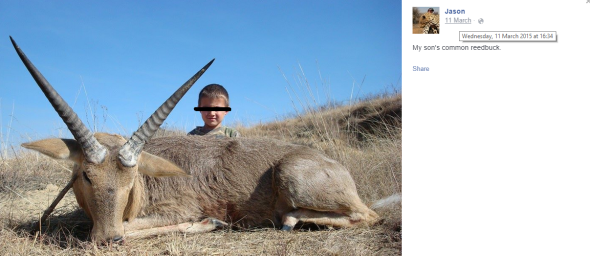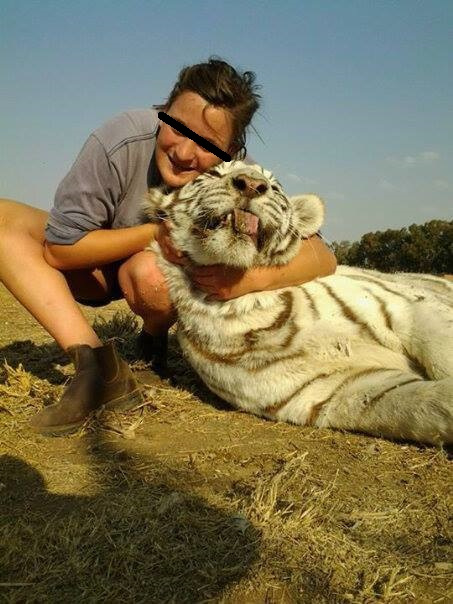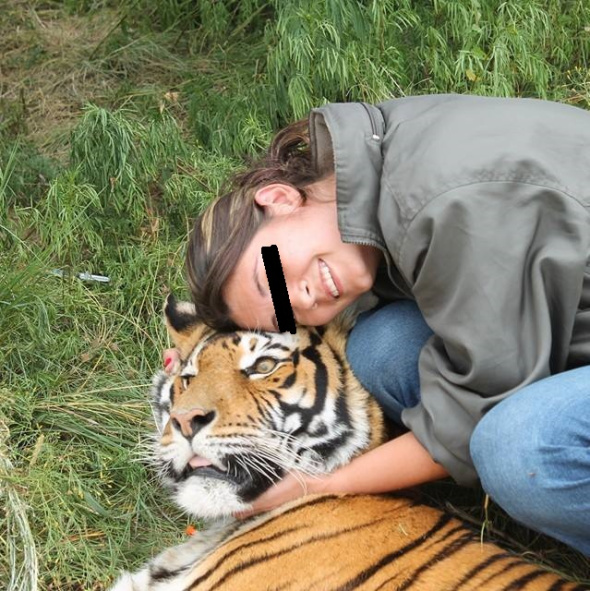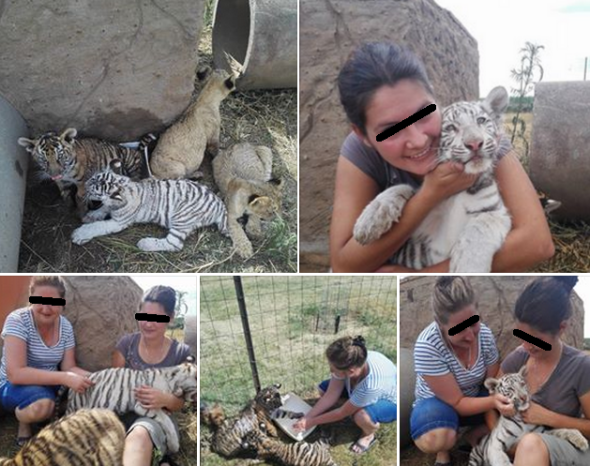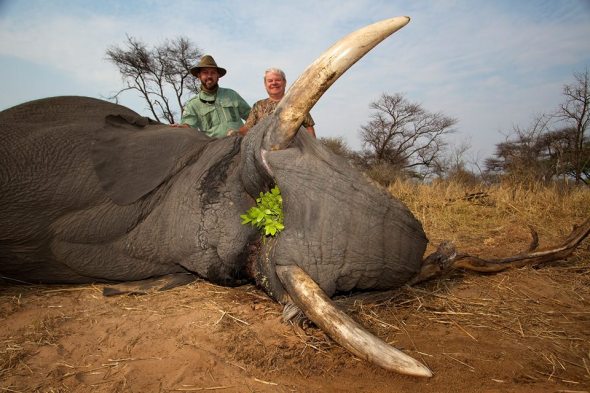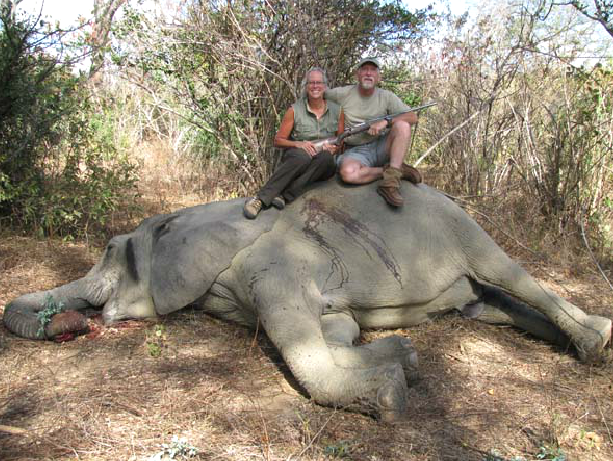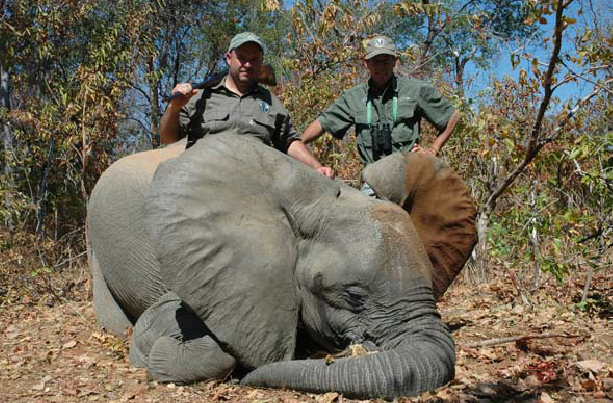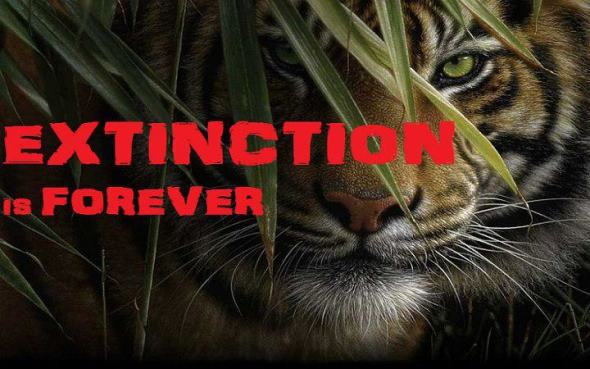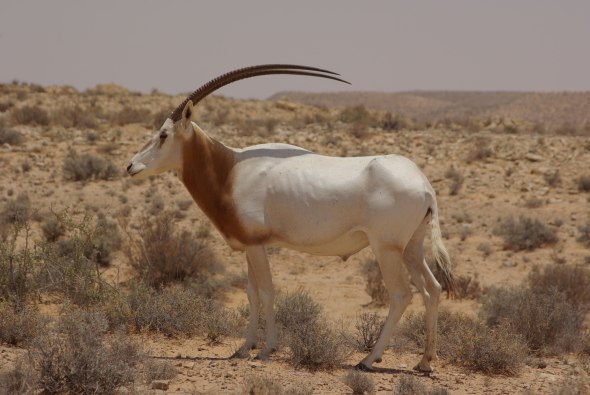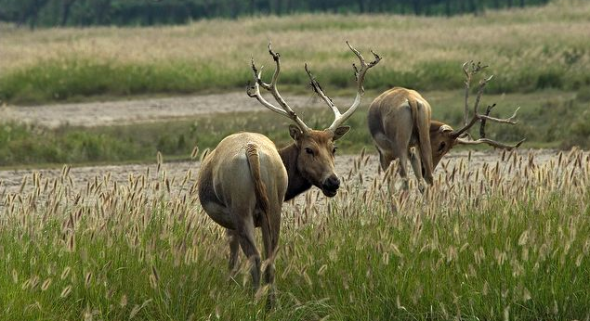WHY ARE WE STILL HUNTING RHINOS FOR | WHEN NO AMOUNT OF FUNDING HAS REDUCED POACHING?
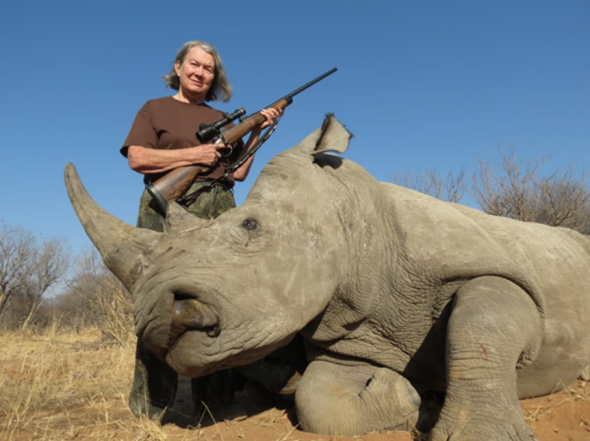
WHY ARE WE STILL HUNTING RHINO?
Why are foreign and native Africans still trophy hunting Rhinoceros for, when no amount of funding generated from these hunts has actively decreased poaching? Image credit: (Mrs Janice Hull, Limcroma South Africa).
Over five years ago I and a group of dangerous game hunters (DGH’s) were involved within a heated debate relating to the money allegedly generated from rhino hunting. The question I asked (and continue to ask) was: “Why are we still hunting rhino for when the money generated from these hunts doesn’t appear to be having any affect whatsoever on decreasing rhino poaching or increasing conservation efforts and security for African rhinos”? (Image above: Hunter - American Janice Hull).
The answer[s] I received were mixed opinions, abuse, and lies. I aimed this question at a number of professional hunters - (PH’s) working in South Africa, and Namibia most of which were American. While the vast majority of dangerous game hunters stated money raised from hunts was directed back into rhino conservation, I’m still after five years questioning where this money is actually going because rhino poaching is not decreasing whatsoever?
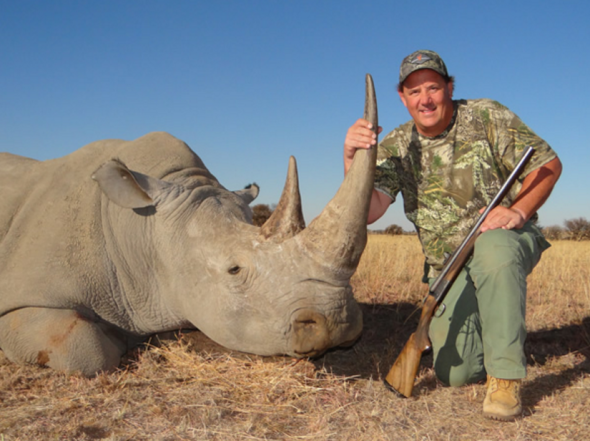
Image Credit: Trophy hunter Mr Loddie Naymola
Since 2008 poachers have slaughtered a staggering 5,940 Rhinoceros - most of which have been poached within South Africa’s flagship park identified as the Kruger National Park. From the year of 2007 rhino poaching figures began increasing rapidly. A total of 13 rhino were bludgeoned to death in 2007. Meanwhile in 2009 South Africa lost a further 122 rhinos (due to poaching).
However come 2011 we really began to see poaching figures rise, come the end of December 2011 a whopping 448 rhinos had been slaughtered by poachers to fuel the Asian demand for pseudo rhino horn medicine. Come 2013 figures shot through the roof resulting in some 1,003 rhinos poached stated the Department of Environmental Affairs come 2013 December end. Then the largest stats were reported back in 2014 of which South Africa lost some 1,215 Rhinoceros to poachers. Yet ‘hunting revenue is preserving our ionic species’?.
Unfortunately at some point from 2014-2016 the Department of Environmental Affairs Minster Honorable Edna Molewa placed a complete ban on the public reporting of any rhino poaching figures, there was no reason as to why this ban was implemented, of which to date still remains in place. Coincidentally (2015’s poaching statistics) had decreased somewhat - of which come December 2015 some 1,175 rhinos had ‘allegedly been poached’. Isn’t that coincidental, a blanket ban on poaching figures is ordered, then come the next year a decrease is seen!.
SOURCE: POACHING STATISTICS.
The SOUTH AFRICAN DEFENCE WEB stated back in January 2016 that a ‘lack of rhino poaching information was negatively affecting anti poaching’. However despite the governmental blackout on rhino poaching incidents numerous organisations such as ‘Stop Rhino Poaching and ‘Outraged South African Citizens against Poaching’ had reported via media, press and anti poaching reports a small rhino poaching decline.
However both of these organisations didn’t obtain their reports from the government, or did they?. So last years poaching stats could indeed be higher than what has been stated in the public domain. Furthermore both Facebook/Online groups/NGO’s share there statistics openly. So in all honesty there is no evidence whatsoever to prove a poaching decline from 2015 has occurred. Moreover and as explained - I myself find it awfully suspicious that since the 2015 poaching report blackout by the South African government - poaching stats just coincidentally decrease like that?.
Elise Daffue whom ‘allegedly runs some form of rhino intelligence group’ (on Facebook - identified as Stop Rhino Poaching), and not in the actual field, stated: “The drop in kills is testimony to the huge effort being made on the enforcement side. Environment Asset Protection strategies have been formulated and implemented over the past three years, guiding the strategic and operational plans nationally – from the ranger in the bush who detects the spoor to the prosecutor who fights that bail is denied. Keeping the numbers down depends entirely on good field work and reserve security, good investigations and good convictions”
While Elise Daffue has stated there was a drop in rhino poaching due to a “huge effort being made on the enforcement side” there remains no evidence whatsoever proving there has been a decline in rhino poaching from 2014-2015. Moreover if there is evidence where has this data come from?. Furthermore whenever we see hunters and ‘animal lovers mingling together’, regardless of what you state your organisation is and does - alarm bells begin ringing, especially coming close to the next CoP summit.
The Founder of Stop Rhino Poaching is friends with a hunter identified as Gustav Collins who runs the Mattaniah Game Reserve Furthermore Elise Daffue is also associated with the individual known as Simon James Naylor who is the Conservation Manager for Phinda Private Game Reserve of which has connections to various hunting organisations and the (WWF) that supports sustainable hunting of Rhinoceros within South Africa and Namibia. Finally (among many others) we have Mr Mark Lautenbach who works as a Specialist Freelance Guide at Ukuthula Lodge. Elise Daffue founder of Stop Rhino Poaching is also friends with a Department of Environmental Affairs worker, and numerous other governmental bodies, police and hunters.
While the above details may not seem overly important, when we’re trying to locate data on hunting statistics, money generated from these activities and more, suspicions are raised when we locate so called professional organisations that are connected to numerous hunting organisations; and institutions such as ‘petting farms’ I.e Ukutala Lodge that has connections with the canned hunting industry and, has featured in a (Blood Lion documentary).
So as one can see it all becomes rather confusing when all we want is upfront and honest answers, however when we ask questions and later find out there are numerous connections to the hunting and possibly ‘pseudo hunting trade’ will we even obtain a serious, straightforward and honest answer? When we’re lied to by hunters, how can we possibly trust Non-Governmental Organisations that are aligned to the very people whom are lying, and are hunting our rhinos while pretending to be so called conservationists? Moreover we (the organisation) do not believe there has been any decline whatsoever relating to rhino poaching. We do though believe that this so called ‘decline may be playing a role in this months CoP17 Summit’ relating to rhino horn legislation.

Image Credit: European trophy hunter, Mr Dennis Schemmel
Back in July 2016 it was reported that Rhinoceros poaching was finally without a doubt at ‘tipping point’. South Africa has seen the largest poaching rates recorded at some 72% from 2011-2015. Namibia recorded a loss of 10.8% from 2012-2015. Zimbabwe recorded a loss of 3.1% from 2012-2015. Kenya has recorded a loss of 4.4% from 2012-2015. Finally ‘other African range states mainly in Central Africa’ recorded a loss of 2.5% from 2012-2015.
While its been reported that some 25,000 Rhinoceros remain on the African continent - a depressing near six thousand have been poached all over the continent from 2012-2015. Yet hunting revenue from one of Africa’s most expensive game animals is allegedly reducing poaching? How is this possible, when we’ve lost so many rhinos, and reports from the Global Initiative have confirmed ‘rhinos are at tipping point’.? Furthermore how can the hunting community continue to state that revenue from rhino hunting is helping to secure the rhinos future when 1. It clearly isn’t due to poaching statistics increasing, and 2. The majority of hunters today are now supporting an international rhino horn trade ban lift?
The Global Initiative stated: “Dozens more rhino have been shot in so-called “pseudo-hunts”. Across Europe, castles and museums have been raided by criminal gangs in search of rhino horn trophies. And in the United States, businessmen, antique dealers – even a former rodeo star and a university professor – have been implicated in the illicit trade”. Driven by seemingly insatiable demand in Southeast Asia and China, rhino horn has become a black market commodity rivalling gold and platinum in value.
SOURCE: GLOBAL INITIATIVE.
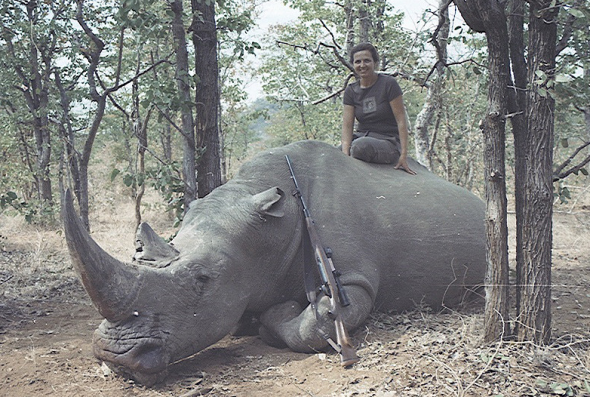
Image: Female rhino hunter, origin of hunter unknown and name. South Africa?
To date there has been very little forthcoming information in relation to revenue generated from African rhino hunts, and where exactly this hunting money is going. Furthermore with rhino poaching still increasing, and tipping points now recorded by ‘various trusted organisations’ the question must now be raised why are we still hunting Rhinoceros?
From the 1940’s tiger hunting was common among many international and local tourists in India. However so too was tiger poaching. It was alleged that revenue from tiger hunting was actually helping to preserve the tiger species and other mammals too. Unfortunately this turned out to be complete codswallop. Then in 1973, the Indian government finally under the orders of Prime Minister Indira Gandhi banned tiger hunting due to so many tigers being poached - and legally hunted at the same time. Had Prime Minister Indira Gandhi not instigated ‘Project Tiger’, the tiger would have gone extinct way back in the 1970’s.
SOURCE: PROJECT TIGER.
In the last 50 years the tiger population in Asia has plummeted from 100,000 to about 5,000. The number of tigers is dangerously low, and the conservation of the world’s remaining tigers is of global concern. Now, in this volume, 40 world authorities on tigers from Asia, Europe, and North America have summarized and identified the management, conservation, and research needs for this endangered species. Before Project Tiger was implemented tiger populations were being hammered. The same identical hunting and poaching behavior before Project Tiger can now be witnessed in Africa - primarily in South Africa where rhinos are also being hammered both by hunters, poachers and pseudo hunters. Does that ring alarm bells among the many FAKE NGO’S out there?
International Animal Rescue Foundation Africa undertook various searches relating to rhino hunting and revenue generated from these hunts within South Africa. What we found was from 2005-2015 a total of 330 ‘White Rhinoceros’ had been legally hunted from 2005-2015. The minimum hunting price was exactly $50,000(USD). While the maximum hunting price was exactly $150,000(USD). It was found that from 2005-2015 and based on the assumption these were (white rhino hunts only) and, taking into consideration the minimum price first. Revenue generated from rhino hunting at the price of $50,000(USD) resulted in an estimated total $181,500,000 million - that’s $181 million(USD) raised from hunting. Meanwhile, and taking into consideration the highest price (being $150,000(USD) a total of $554,500,000 million was generated.
While we cannot place these two equations together and provide a factual sum because we don’t know how many rhinos were legally hunted at each individual price, the sheer fact that millions of dollars has been generated from 2005-2015 should be enough to explain that something isn’t quite right here. Furthermore these figures are based on the assumption these were white rhino hunts,
MINIMUM HUNTING PRICE: 2005-2015 = $181,500,000 million(USD)
MAXIMUM HUNTING PRICE: 2005-2015 = $554,500,000 million(USD)
SOURCE: HUNTING REVENUE.
SOURCE: REPORT TROPHY HUNTING.
To date (and as you can see within the sourced links above) there still hasn’t been a single reliable report that confirms just how much money is being made from trophy hunting in South Africa. The only so called reliable report (which is about as reliable as a chocolate teapot) and, being the only report to surface thus far stated that $200 million(USD) was generated from the years of 2010-2011 (in regards to all South African trophy hunts)? Who number crunched these figures, who even dared to come up with such an absurd low revenue income? I would also like to remind hunting organisations, just because you don’t have to tell us what you’re making, we can contact other organisations/institutions, locate prices, we can phone and email. Eventually we’ll find the truth!
Now either our expert eyes and our mathematical friends are missing something here, or journalists media and the pro trade lobby are forgetting that despite hunting revenue being made pubic. Environmental Scientists can research CITES trophy hunting statistics, then locate the common maximum and minimum price, and the number of rhino trophy heads exported/imported. So as one can read above just from the years of (2005-2015 - millions was made just from Rhinoceros hunting). Moreover who ever came up with the 2010-2011 sum of $200 million USD clearly is missing a lot of money off here, and needs to undertake a mathematical course too?
Rhinoceros hunting is by far the biggest money maker within the hunting business (most of this money is made in South Africa which hosts the largest rhino populations on the planet). Furthermore it just seems too coincidental that from 2010-2011 literally every hunting organisation that’s promoting/advertising rhino hunts has mysteriously removed their prices.
Trophy hunting of rhino is strictly regulated. Every year a total of five (black rhino) can legally be hunted within each of Namibia and South Africa, which totals to a maximum of (ten) per year - five per country. Furthermore in South Africa and Namibia one white rhino can be hunted by one hunter per year - that’s one rhino per hunter every year. Unfortunately there remains no further hunting revenue and data from the years of 2014. Its been estimated by the National Geographic based on the United States Fish and Wildlife report that the United States imported a total of 328 white rhino trophies from South Africa from the years of 2005-2014. Meanwhile a total of 7 white rhino were hunted and subsequently imported to the United States from Namibia from the years of 2005-2014.
SOURCE: NAT GEO HUNTING DATA.
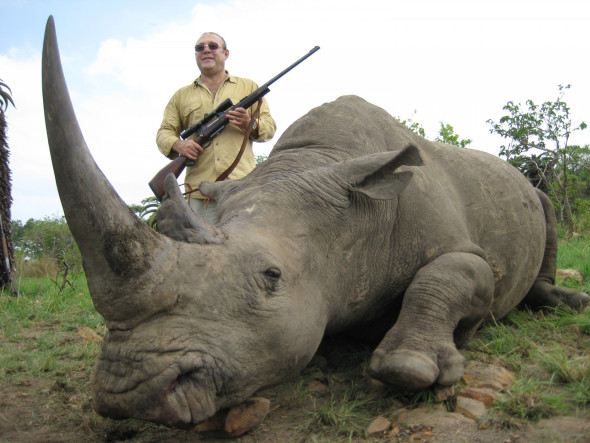
Image Credit: Rhino hunter Alexander Tseytlin
Black rhino hunts have provoked much controversy over the past five years mainly because black rhinos are actually listed as (critically endangered), hence why only five black rhinos can be hunted per year in South Africa and Namibia. Since 1996-2011 the species has been listed as near extinct on the International Union for the Conservation of Natures Red List. Fortunately due to ‘private farming conservation efforts (not wild efforts) the species has allegedly and gradually increased (primarily due to hunting?)’. Both private and wild populations are believed to be increasing within South Africa and Namibia placing the total species population count from 2010 at 4,880 black rhinos.
SOURCE: IUCN BLACK RHINO.
The only reports that we ourselves can offer in regards to black rhino trophy is that of media and press reports that have documented on large scale bidding for black rhino hunts. In January 2014, Corey Knowlton bid $350,000 for a permit to hunt and kill a black rhino in Namibia (Source: Corey Knowlton). Back in June 2016 Namibia offered up three of its black rhinos to trophy hunters. While the price has not been documented its most likely be in the region of just over $1 million(USD) for the three Black Rhinoceros (Source: Namibia black rhino hunt).
Meanwhile back in 1996 a game rancher named John Hume paid about $200,000 for three pairs of endangered black rhinos from the wildlife department of the South African province of KwaZulu-Natal. Among them was a male who would come to be called “Number 65,” and whose death would play a central role in the debate about conservation.
When the black rhino bull arrived, Hume’s farm manager — a burly Zimbabwean named Geoff York whose typical mode of dress is army boots and a pair of purple shorts — tranquilized him, clipped two notches in his left ear and two in the right, and gave him a number: 65. Mr John Hume later picked Mr Peter Thormahlen to organize the killing of ‘number 65’. The price was set at a $25,000 deposit on a $150,000 fee for a seven-day hunt.
Most of that would go to John Hume - the very man that is today advocating for an international legalized trade in rhino horn and has connections to a wide number of organisations such as, WWF, IUCN, CITES, The Department of Environmental Affairs and numerous other figures. Then on July 23rd 2005 Thormahlen and his client with John Hume tagging along proceeded on foot. Suddenly the rhino noticed them and rose from the dirt. The client pulled the trigger, and the first bullet pierced Number 65’s skull. The rhino, still standing, turned. A second bullet hit, and the rhino dropped dead. (Source: John Hume Rhino Hunt).
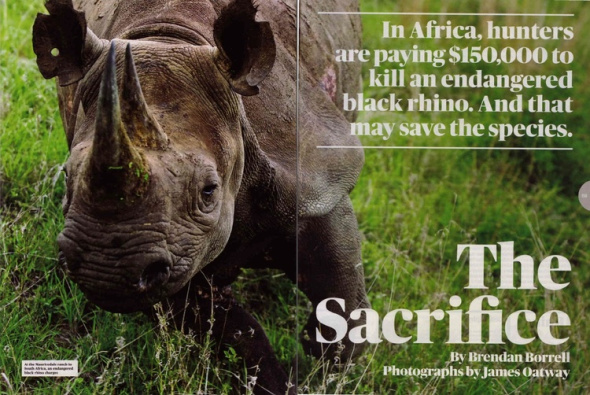
Source: The Sacrifice, please click the source tag for more info
As you can read there is a staggering amount of money parting hands to hunt both black and white rhino. Yet poaching is still skyrocketing? South Africa has lost from 2008 almost 6,000 rhinos to poachers. Back in 2014 Namibia lost a total of 24 rhinos to poaching, then come 2015 a whopping 60 rhinos were poached. (Source: Poaching stats Namibia).
So the question still remains just what exactly is all this money going towards, can each professional hunting organisation prove to me, my organisation and the public that the money generated from rhino hunting is indeed being used to fund anti poaching operations, security, conservation, education, awareness and horn poisoning? (Etc).
While I’ve been extremely silent on this issue too since 2011 I’m going to make it pubic now. I dislike the fact that a ‘prominent South African game hunter’ is involved with the Rhino Orphanage. Back in 2011 we (the organisation) were going to submit funding for scales and equipment, however when running a trace on whom ran the main website, down to a trace on that individuals Facebook page, and more we later discovered a ‘silent partner’ that is hunting many of the big five..
..So who do we trust when it comes to facts and figures? How can we trust anyone that is stating hunting is indeed increasing rhino numbers when literally every individual and organisation are in someway aligned to one another in South Africa and over the borders? Can the Rhino Orphanage and its ‘affiliate’s’ also prove that every single rhino that’s been saved has been released back into a reserve, and not hunted for sport that clearly from this entire document has proved - no amount of hunting whatsoever is increasing rhino populations!
Hunting operations are indeed expensive. While the price of a hunt may indeed seem high. One also has to take into consideration what the farmer and/or professional hunter has to pay for too. Upkeep of land, maintenance of vehicles and buildings, fuel, service charges for gas, electricity, water, and rent Etc, food and beverages for the visiting hunters, guest house uses, damages to guest houses, travel, firearms (among many other bills). Then of course comes anti poaching being the last bill. Some of this expense can be viewed below.
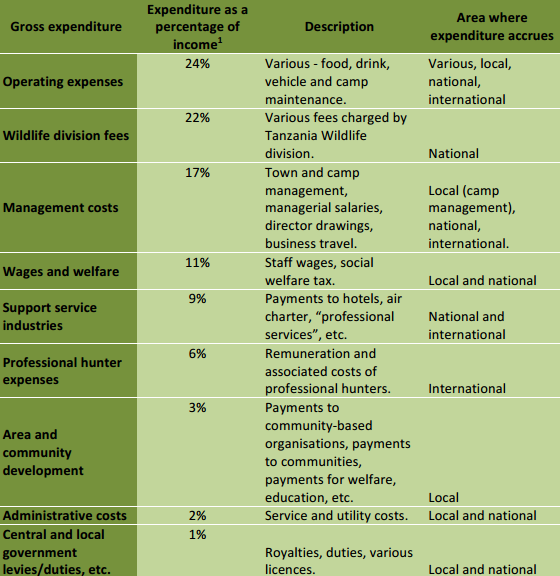
Image: Hunting Charges (Source: IFAW)
While we know that Rhinoceros trophy hunting is indeed expensive, poaching is unfortunately still increasing in various African countries, please do check the sourced links out above, and read that data carefully. The image above with source proves that no big five farmer is taking every single dollar or euro that’s advertises rhino hunting on their site or allows rhino hunting on their property.
So the question remains why are we still hunting rhino for? The question I’ve answered. Rhino hunting is nothing more than a overpaid sport that does nothing whatsoever for conservation and, is not under any circumstances whatsoever contributing to decreasing poaching. All these millions if not billions being made yet here we are still seeing rhinos poached. Finally, and the very best question of them all. If hunting revenue from rhino hunts is not decreasing poaching, how the hell is a so called sustainable rhino horn trade going to decrease poaching? Same money - same prices - going nowhere!
Thank you for reading.
Dr Jose C. Depre PhD. MEnvSc. BSc(Hons) Botany, PhD(NeuroSci) D.V.M.
Master of Environmental, Botanical & Human Science.
Environmental, Botanical and Human Scientist.
SHOULD ALL HUNTERS BE SCREENED BY MENTAL HEALTH?
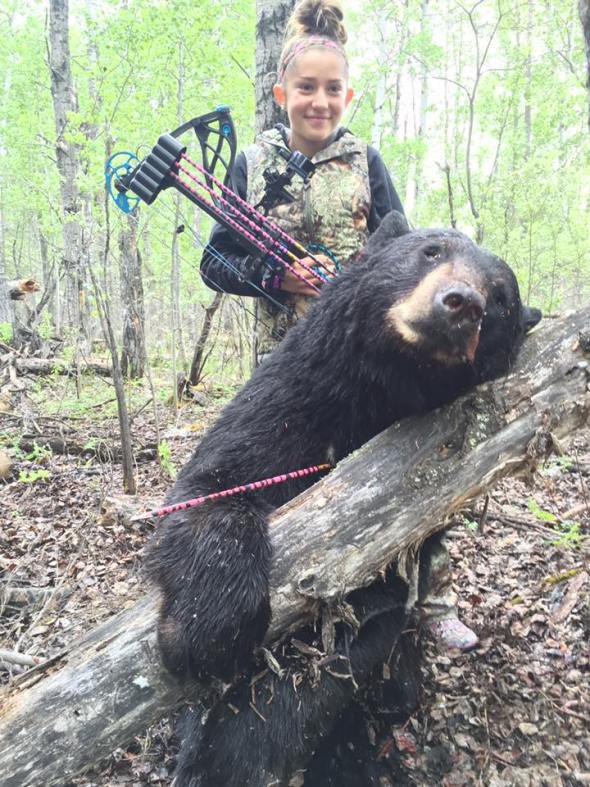
SHOULD ALL HUNTERS BE SCREENED BY MENTAL HEALTH?
Over the past five years I’ve noticed a worrying increase in the number of youth trophy hunters that are holidaying with their parents to Southern Africa for trophy hunting excursions. Some people may assume I’m being over-cautious or simply trying to stop the younger generation from undertaking a sport or so called tradition that they and their families enjoy.
Far from it; moreover I don’t believe its just the youth, that, in my eyes “would benefit from mental health screening”, but, instead all would be wannabe hunters, youth and adult, (basically anyone that wishes to acquire a hunting permit and firearms licence) to kill African wildlife and local wildlife endemic to their own country. Installing such strong and mandatory protocol - removes and/or bans mentally unstable individuals and sadists from out continent, temporarily or permanently.
Most if not all young hunters are American - standing at some 14 million and counting; furthermore there are few if any ‘requirements or checks carried out’ on the American youth or adult that applies for a hunting permit and firearms license within all states of America that could be hosting underlying mental health problems.
Today I witnessed yet again another hunter no older than ten years of age, holding a high-powered firearm, which to me on a professional note - I do find quite concerning - especially when a routine check of that individual showed up only one year of training. On researching the boy, his home town, hunting and firearm requirements . This ten year old child had to demonstrate that he was capable of handling a firearm, as well as being knowledgeable on firearm health and safety regulations.
Finally the young man “in America” must hunt with an adult over 21 years of age who’s holding a full clean hunting licence (none of which was being followed in the video). Now in relation to checks regarding “mental health screening”, the only checks that are undertaken are on those American citizens that have been “confirmed as mentally unwell/unstable, or are at risk of hurting themselves or others”.
Unfortunately under American law it does not state that all hunters must undergo a mental health check every six months to a year to rule out mental health problems ranging from depression, anxiety attacks, generalised anxiety disorder, panic disorder, obsessive-compulsive disorder, post‑traumatic stress disorder and social anxiety disorder (among many other clinical problems).
After much research, I’ve located that ‘in a number of states of America’ there are no laws or requirements whatsoever aimed at those wanting to hunt or apply for a firearms license. That I find incredibly worrying, if not bordering absolute crazy. A firearm in a sense is no different to a vehicle. Both are dangerous in the wrong untrained and unstable hands, and both can kill if due care and attention is not practiced.
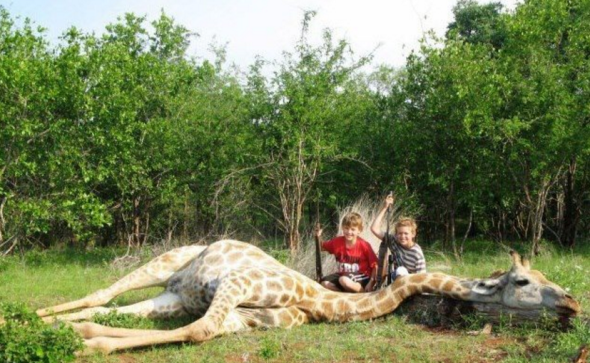
Image: Two American 10 year old’s kill giraffe
Meanwhile most American states host a ‘minimum age requirement’ to apply for a hunting licence, and firearms permit. The lowest minimum age is (ten years of age in some states) - again I find that very concerning, especially when the human brain is still developing from the ages of 1-21 years of age.
Fortunately most states though require some form of ‘education on handling and using a firearm’ with ‘firearms safety being a must’. Unfortunately this is not a requirement within a ‘few states’ from which any child of any age can apply for a hunting and firearms licence. Within them few states there are no laws whatsoever that state you have to undergo any form of firearms training and safety course, or even education on handling and using a firearm, furthermore there are no mandatory mental health checks!
So theoretically speaking we could have a large number of children and young adults hunting in Southern Africa that have no professional training whatsoever on how to use a firearm, not forgetting anyone of them hunters that could be hosting underlying mental health conditions such as: Generalised anxiety disorder, panic disorder, obsessive-compulsive disorder, post‑traumatic stress disorder, social anxiety disorder, psychotic depression, personality disorders, or even eating disorders, or children that are living within a ‘dysfunctional family setup’.
The minimum age that I myself could locate throughout all the American states listed here was (10 years of age and 12 years of age). Other state age requirements ranged from (16 years of age and 21 year of age). As you can see in the link above there are also some states that have no minimum age requirement, and within other states the only real requirements are that the young hunter is accompanied by a ‘qualified adult hunter’, or hunts within ‘a group of mixed age qualified hunters hunting a certain species’.
When scanning through all state requirements and those that hosted nothing more than word of mouth from an adult there wasn’t under any circumstances any form of mental health screening. The only concerns relating to mental health ‘were aimed at those that had been diagnosed with a serious mental health problem’ however even then the law states these individuals mustn’t be discriminated against. Another major concern was that very few state requirements undertook any form of background checks on the wannabe youth or near adult hunter.
So again, theoretically speaking, we could have in Southern Africa any child from the age of 10 years to 12 years. or near adult, that have committed anti social, and violent crimes or are hosting underlying mental health conditions, with little if any firearms training, hunting animals with high powered rifles. Furthermore if anyone of them youths or young adults were traumatized once killing a large animal it could exacerbate any underlying mental health problem thus seeing a potential crime being committed on the continent or once back home. As a specialist I’m absolutely gobsmacked that the United States Government haven’t as yet implemented more tougher and stringent firearm safety protocol.
While most states do require you to undergo a hunting education course, many of these courses can now be undertake online, from the comfort of your own home for as little as $25.00USD. There is no one monitoring the student to ensure they don’t cheat, there is no one with the student to ensure errors can be corrected, and finally once the course has been concluded - you can even print your own certificate off (should you pass that is). Most of these courses do not require you to attend a real live class (with instructor) to prove you’re capable of handling a firearm, and have grasped all the safety aspects of that firearm. Again I find that deeply worrying!
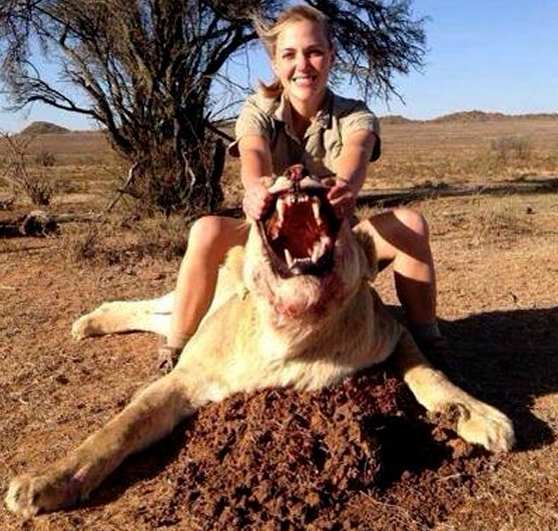
Image: Female lion hunter shows no respect whatsoever
So as explained above, within the past five years there has been a large spike in the number of young hunters entering Southern Africa. Most dangerous game hunts take place within South Africa where there is an abundance of heavily populated dangerous game. However when in South Africa the young are now hunting larger, and much dangerous animals, down to big yet friendly animals such as giraffes, rather than smaller animals in their own country. While this may not seem concerning; its very concerning if we have young and near adult hunters with little training (or no training) running amok in Southern Africa that (could be hosting underlying mental health problems).
Since 1966, the National Rifle Association has urged the federal government to address the problem of mental illness and violence. As we noted then, “the time is at hand to seek means by which society can identify, treat and temporarily isolate such individuals,” because “elimination of the instrument by which these crimes are committed cannot arrest the ravages of a psychotic murderer.”.
More recently, the NRA has supported legislation to ensure that appropriate records of those who have been judged mentally incompetent or involuntarily committed to mental institutions be made available for use in firearms transfer background checks. The NRA will support any reasonable step to fix America’s broken mental health system without intruding on the constitutional rights of Americans?
What the NRA is forgetting though, is that they’re only supporting legislation from which an ‘individual has been diagnosed with a mental illness’, rather than all individuals that could be harboring symptoms of mental illness, drug or alcohol abuse that haven’t as yet surfaced. As a professional and qualified neurologist, I find that incredibly concerning, that anyone who’s not undergone a routine mental health check - can apply for a hunting and firearms licence. Furthermore if symptoms of any underlying mental illness begin to surface and, rage out of control - can end in abuse, or worst case scenario - suicide or murder.
Meanwhile, while this area of regulation is not being monitored professionally then it is within my professional opinion (and that of other experts) that all countries on the African continent ban any youth and adult that hasn’t undergone a full psychiatric screening appointment. There is no harm in visiting a domestic psychiatrist or mental health community worker. Furthermore if there is an underlying condition found, that condition or symptoms can be professionally treated thus helping the individual, and eliminating any identified symptoms or an illness from becoming worse.
Another concern that I myself located within the federal laws of America is listed below for your information:
“A person cannot be federally disqualified from owning a gun based simply on a psychiatrist’s diagnosis, a doctor’s referral, or the opinion of a law enforcement officer, let alone based on getting a drug prescription or seeking mental health treatment. Doing so would actually discourage troubled people from getting the help they need”
I find that statement absolutely ludicrous. A psychiatrists diagnoses for instance is a professional diagnoses based on his or her expert findings; furthermore a psychiatrist has to undergo over twelve years of professional medical training in most cases. So why an individual that has for instance been diagnosed with a personality disorder cannot be federally disqualified for I don’t know. That itself is off the entire “stupid scale”.
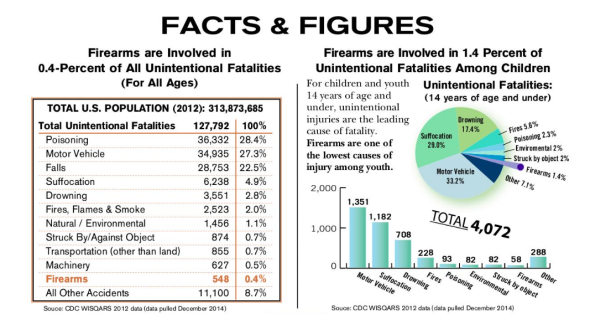
Image: 2014 states on unintentional firearms accidents on increasing
If this is how the NRA truly work then we seriously have major problems. Moreover how many individuals are there in America that have underlying mental problems, or have been diagnosed by a psychiatrist as suffering from depression, schizophrenia, manic depression, post traumatic stress disorder holding a full hunting and firearms licence - or been granted one with no checks based on the NRA and U.S. governments screening regulations? I am not under any circumstances, whatsoever trying to discriminate here, however if an individual is “clinically and mentally unstable” then providing a firearms and hunting license is a recipe for disaster.
Finally its in the interests of the psychiatrist and, the patient once a diagnoses (or degree of concern) has been made to then follow that report up, report to the individuals personal practitioner and help that individual ‘before a hunting or firearms licence is granted’. I’m somewhat perplexed as to why this area of ‘regulation’ would discourage troubled people from getting the help they need.
Furthermore under no circumstances should anyone be firing any form of firearm or operating anything ‘dangerous’, while under the influence of any medication that can induce sedation, drowsiness, lethargy, depression, mood swings, and agitation (among many mother prescription side effects). So again, in my professional opinion no government in anyone of the trophy hunting countries on the continent of Africa should be permitting any foreigner to hunt if they are under the influence of any type of medication, and not just psychotic medicines, as well as being diagnosed with a clinical mental health illness/problem/or/disorder.
SOURCE: https://www.nraila.org/articles/20130124/mental-health-and-firearms
Meanwhile, while mental health screening is indeed of a major concern, so to is that of uneducated, poorly trained or non-trained young hunters. To date there is (coincidentally) no database that reports on the number of youth hunting deaths in America. Furthermore trying to locate any statistics in relation to foreign African hunting deaths and accidents is like searching for a needle in a hay stack. That doesn’t though mean there isn’t any deaths or accidents, because there most certainly is!
Childhood gun and shooting accidents are not rare. They are one of the top ten leading causes of accidental death for all age groups outside of newborns and infants. Furthermore these known stats overtake those of adult hunting deaths. In 2007, there were 122 unintentional firearm deaths in children, and an additional 3,060 nonfatal gun and shooting accidents, which resulted in an estimated 1,375 children needing to be hospitalized for their injuries. Unintentional firearm deaths in children have remained at about the same levels since, with 114 deaths in children and teens less than age 18 in 2010.
How many childhood hunting accidents are there? That is hard to say (as explained), as there doesn’t seem to be a national database with hunting accident statistics. The Hunter Incident Clearinghouse of the International Hunter Education Association, which hasn’t been updated recently, reports 27 hunting-related shooting accidents in 2007 in children and teens less than 18 years old. This includes at least one death, a 14-year-old in Georgia who was unintentionally shot in the chest by another 14-year-old (who had completed a hunting education class) while they were hunting squirrels.
In 2006, the Hunter Incident Clearinghouse reported 3 deaths and 38 hunting-related shooting accidents in kids and teens. The youngest was just 5-years-old. To get more recent hunting accident statistics, you will likely have to go to each state’s wildlife conservation agency and try to find it (which is exactly what I’m doing.)
The National Shooting Sports Foundation likes to tout hunting accident statistics that rank hunting injuries as somewhere between playing billiards and bowling and much less than playing golf and tennis. To put this kind of thinking into perspective, though, compared to playing golf and tennis, isn’t a hunting injury that involves a shooting much more likely to be fatal? And it is these types of hunting-related shooting accidents that people are concerned about.
That doesn’t mean that you shouldn’t take your kids hunting. You just want to do it as safely as possible to help reduce your child’s risk of getting hurt and to avoid these types of hunting accidents and tragedies which have been reported in the last few years:
- A 14-year-old in Calaveras County, California who died after he was unintentionally shot by a 16-year-old while they were hunting.
- A 17-year-old in Anderson County, South Carolina who died after she was unintentionally shot in the back by her stepfather with his high-powered rifle as they hunted deer.
- A 10-year-old in Cache County, Utah who died after he was unintentionally shot by a hunting companion who was removing his rifle from the front of a four-wheeler, when it fired.
- A 16-year-old from Exeter, California who died while hunting with family and friends after he was unintentionally shot when he wandered in front of the other hunters.
- A 14-year-old from Palisade, Colorado who died after he was shot in the chest while bow hunting with his father.
- A 12-year-old in Stephens County, Oklahoma who was hospitalized after his 10-year-old brother unintentionally shot him in his backside after he tripped and fell with a gun in his hand while hunting.
- A 15-year-old in Minot, North Dakota who died while hunting with his father during the opening weekend of deer season.
- A man near Butte, Montana who was in a critical condition after he was unintentionally shot in the abdomen by a 13-year-old in his hunting party who was unloading his rifle.
Keep in mind that these incidents don’t include the perhaps even more common scenario of when a child or teen unintentionally shoots an adult in his hunting party. This happened recently when a 12-year-old shot a man he was hunting with in Iowa when his shotgun accidentally went off.
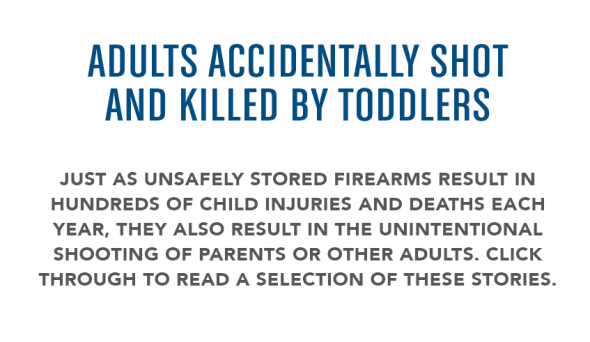
Image: Read more here: https://everytownresearch.org/reports/innocents_lost/
All of these reports are freely available (and there are hundreds). Furthermore these deaths and few accidents could have been avoided - had the young children been professionally educated, and monitored. Furthermore increasing the hunting age limit from 10-16 years of age (in most states) to above 18 years of age. Meanwhile in other states where there are no laws, or even the whiff of any gun control regulation, actually introducing such regulations and laws, and as stated above (ensuring that no one applies for a hunting permit or firearms license until 18 years of age or over).
SOURCE:
International Hunter Education Association. Hunter Incident Clearinghouse. 2007 Incident Summary. Accessed January 2013.
National Center for Injury Prevention and Control. WISQARS Nonfatal Injury Reports and Injury Mortality Reports. Accessed December 2012.
Study Guide for California Hunter Education Certificate. Accessed January 2013.
Keeping to the mental health side of things - back in 2010 the United Kingdom witnessed one of its worst firearms crimes seen since the Dunblane school massacre. Mr Derrick Bird whom fulfilled all the rifle and gun ownership laws (the strongest gun laws on the planet), as well as passing mental health assessments, shot dead 12 people, injuring a further 11 individuals, before taking his own life. The question is why did he decide that day to open up his gun cabinet and rampage through Cumbria killing many (and himself)?
WHY DID DERRICK BIRD KILL 12 PEOPLE BACK IN 2010?
First lets take a look at how Mr Bird was able to qualify for a gun and hunting licence. Getting a licence is a long and complicated business. Every stage of the process is designed to reduce the likelihood of a gun falling into the wrong hands. It starts with an application form which asks specific questions about why the individual wants a gun, telling them they need to show “good reason”.
The criteria are tougher for firearms than shotguns because weapons that fire bullets must only be used for specific purposes in specific places. These would include deer stalking or sports shooting on an approved range. In contrast, shotguns tend to be used in more general rural circumstances, such as by farmers who are protecting livestock from foxes - and police recognise that landowners need guns for pest control.
Independent referees provide confidential character statements in which they are expected to answer in detail about the applicant’s ‘mental state, home life and attitude towards guns’. Officers check the Police National Computer for a criminal record and they speak to the applicant’s GP for evidence of alcoholism, drug abuse or signs of personality disorder. Social services can also be asked for reasons to turn down an applicant. Finally, senior officers must be sure that prospective shotgun holders have a secure location for the weapon, typically a dedicated gun cabinet. Each certificate is valid for five years.
Mr Bird passed all the criteria for gun ownership, including a mental health examination, and drug and alcohol abuse surveys. Social services also assessed the applicant and stated that Mr Bird was in full state of mind, with no obvious signs of violence, nor was there any cause for concern relating to mental health problems.
However something changed, and that was Mr Birds mental health, which deteriorated rapidly resulting in 12 people being shot dead at point blank range, including a further two dozen more injuries. To date no one really knows for sure why Mr Bird decided that day in June 2010 to go on a killing spree.

Image: Mr Bird’s victims all shot at point blank range
However when Forensic Psychiatrists eventually delved deeper into Mr Birds past life right up to the day he began killing, then unearthed many ‘stress factors’. We know that stress can if not relieved lead to various forms of mental health problems, breakdowns or overloads to the point that an individual eventually explodes. It was stated that Mr Bird reached a ‘stress tipping point’ thus seeing no way out. From there he then killed, before taking his own life.
There has been speculation that Bird may have had a grudge against people associated with the Sellafield nuclear power plant that he worked for as a joiner, resigning in 1990 due to an allegation of theft of wood from the plant (stress 1). He was subsequently convicted, and given a 12-month suspended sentence. Three of the dead were former employees although there is no evidence that any were involved with his resignation.
Terry Kennedy, a fellow taxi driver who described himself as one of Bird’s best friends, and was wounded by Bird, has claimed that Bird had a relationship with a Thai girl he met on holiday in Pattaya, Thailand. It has been further claimed by another friend of Bird that he had sent £1,000 to the girl, who subsequently ended their relationship via a text message; he added that Bird had been “made a fool out of” (stress 2).
It has also been speculated that Bird had been involved with a family dispute over his father’s will. The speculation was heightened when it was revealed that Bird had targeted both his twin, David, and the family’s solicitor, Kevin Commons, in his attacks, killing both (stress 3).
Police investigating the killings have also found that Bird was the subject of an ongoing tax investigation by HM Revenue and Customs for tax evasion and the threat of possible future prosecution and punishment might have contributed to his action (stress 4). According to Mark Cooper, a fellow taxi driver who had known him for 15 years, Bird had accumulated £60,000 in a secret bank account and was worried he would be sent to prison for hiding the cash from HM Revenue & Customs.
So we know of four ‘speculated stresses’ that may have built up and up in Mr Birds personal life, of which its highly likely he eventually saw red, removed the firearms from his cabinet and killed 12 people before killing himself. However prior to these killings Mr Bird was seen as a stable, easy going, and nice chap, fun loving, was “one of the lads”, and socialized like any other individual. Unfortunately all four speculated stresses are what Police believe eventually led to Mr Bird going on a killing rampage.
Under U.K. law every five years a gun holder must reapply for a firearms license. The same checks, interviews and examinations are undertaken during every re-application for that license. These checks are there to ensure that both the firearms holder is stable, and to ensure the public are kept safe.
In today’s society bullying, mental health problems, anti social behavior, drug and alcohol abuse, pier pressure, violence, murder, rape, family problems, divorce and unemployment Etc are on the increase. These problems are not just confined to the United States neither. While in the United Kingdom Mr Bird had undergone various aptitude checks, mental health and social service checks, these checks are not being carried out on the millions of young and adult American trophy hunters.

Image: Press report of Birds rampage
Furthermore as explained above there have been a wide number of people killed by gun owners - and gun owners that haven’t undergone the correct or even adequate training. So the number of questions remain are: Why are these checks not being carried out, how long is it going to be before we see a stressed out trophy hunting teenager or, young adult going on the rampage in Southern Africa or America, why are no mental health checks and more than professional firearms training not being carried out in America before young hunters visit the African continent?
Every month now I am witnessing younger adults hunting in Southern Africa using a wide range of high powered firearms. On researching these children I find they are still at school. Furthermore on going through their ‘open public Facebook and Twitter accounts’ I am reading various problems from pier pressure, family relation problems, drug and alcohol abuse, bullying, school pressure, down to personal relationship problems too.
Finally when researching through every single gun shooting in the U.K. and the U.S. you eventually find that all of these shooters were emotionally and mentally to some degree unstable. In my personal and expert opinion its now time we either banned American hunters from Southern Africa that haven’t undergone the strict training and mental health checks, we increase the trophy hunting age from 16 to 21, we ban minor hunting, or we ban Americans from entering Africa that wish to hunt?
I have written an incredibly long document to each Environmental Affairs Ministry in Southern Africa and every single United States Senator. We need this area of lax gun and animal welfare laws tightened immediately. Enough is enough. In my humble opinion all hunters must be screened by mental health, doing so will see a decrease in hunting accidents, hunting gun crimes, and an improvement in animal welfare and rights laws - with far less animals slaughtered at the hands of sadists.
Dr Jose C. Depre PhD. MEnvSc. BSc(Hons) Botany, PhD(NeuroSci) D.V.M.
Master of Environmental, Botanical & Human Science.
Swedish Democratic Treasurer (MP) | Trophy Hunting Threatened Species.
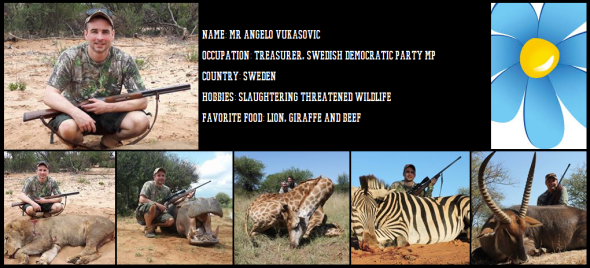
Minister Angelo Vukasovic | Swedish Democratic Party
Two months ago International Animal Rescue Foundation representatives undertook an investigation into the recreational lives of over 100 European Members of Parliament, and parliamentary radical wings. The investigation also focused on individual countries hosting radical party organisations that are in our opinion a threat to the European Union, society and as we believed - our environment and wildlife. The British National Party may want to take note of this; three (BNP) members have been caught red handed hunting wildlife within Africa from 2014-2016, one of the kills relating to a zebra was so barbarically cruel, the professional hunter [PH] had to intervene to put the animal out its misery, yet the BNP are against cruel slaughter?
However the most extreme group (in our opinion) was the Swedish Democratic Party of which some 20.1% of the Swedish public support. Fortunately since we revealed our findings to the press and media in relation to MP Angelo Vukasovic (pictured above) support for the party has declined slightly since going to press on the Sunday, Monday and Tuesday. We wish to thank all the press and media officers that have covered this single story thus far, however be prepared for further revelations, while we take a firm stance against (racism), we also take a bigger stance against cruel canned hunting, that often results in the animals being drugged, left in hideous pain and trauma, before being shot dead and put out of their misery (FOR SPORT)!?
Angelo Vukasovic made no attempt to conceal his past and present horrific hunting practices (which he is now). Furthermore when interviewed by local Swedish press and media, then international press and media, as the story broke, he strangely admitted to ‘canned hunting’. Something many hunters do not admit upfront, simply because they know its cruel, and often results in an aggressive backlash from the community of animal lovers. Vukasovic stated that most of the animals he hunted, including the lions from the Kalahari were fenced in (canned hunts), which we find somewhat suspicious. Did Vukasovic admit to the canned hunting knowing the backlash from the community wouldn’t be as harsh had he admitted to hunting wild male lions, which if proven to be true would see the community of animals lovers gunning for blood. Coincidentally them lion images are the ones that have vanished. All the others remain?
Two of the lions Vukasovic hunted are below. There is no proof that these two lions were hunted within a fenced in zone, no evidence of fences, and as yet no hunting agency coming forward to spill the beans. As explained, and should these two lions turn out to be legally hunted wild lions - then the tables turn because we then have an entire pride affected that may have had cubs, and without the males tending to the prides, the pride and cubs will eventually die thus resulting in further animal deaths. So when we witnessed Vukasovic admitting to the “lesser legal offence” we was was somewhat shocked, yet left suspicious.

Image: Vukasovic two suspected wild lion hunts.
International Animal Rescue Foundation Africa and of course myself the (CEO) were accused of launching a ‘political assault onto the party’. Far from it. Vukasovic is no different from any other hunter, however in Vukasovic’s case he has a reputation to keep up (or tried), of which he is aligned to the Swedish Democratic Party. This is the issue that many (MP’s) seem to forget, regardless of whether they are in the office on duty, or on holiday (not on duty), an (MP) must at all times keep the parties reputation intact and under no circumstances bring the party into disrepute. The same applies more or less to any domestic civil working contract for 90% of companies around the globe in regards to the general public.
Vukasovic Plays Down the Hunt
In good old hunting fashion Vukasovic played down his hunting activities in South Africa and we believe Botswana. The same old lame excuses were; The hunt was legal; Well rehearsed; Hunting only problem animals; Reducing populations of farmed stock to preserve the remainder; Animals were killed quickly; No harm came to any animal; I ate 80% of all animals hunted. Canned hunting has been well documented as a cruel and barbaric sport where animals such as big cats (E.g) are mostly bred as cubs, petted by tourists, then when older are discarded into the hunting farm. From there they are often drugged, static bait traps are set so no fair chase can occur, and the animal[s] are then shot dead. And here’s me thinking that the Swedish Democrats are against cruel animal killing!?
Animals on canned-hunting ranches are often accustomed to humans and may be native to the area, raised elsewhere and brought in, or purchased from individuals who are trafficking in unwanted or surplus animals from zoos and likely even circuses. Canned hunts are becoming big business. Most of these ranches operate on a “no kill, no pay” policy, so it is in owners’ financial interests to ensure that clients get what they came for.
Canned hunting, which is the hunting of captive-bred lions, has become a huge industry in South Africa. Wild hunting controlled only 1.1% of the lion hunting market in 2010, leaving 98.9% of the market controlled by canned hunting. This industry has helped lift Africa’s total trophy hunting revenue to $200 million per year. South Africa, in particular, has become a hub for the industry, with markedly higher success rates of canned hunts. In South Africa alone, American and European tourists kill around 1,000 canned lions every year. Success for the farm owners comes at the ultimate cost for the lions.
Lions used for canned hunting purposes are bred for the sole purpose of eventually being hunted and killed. The slogan, “Bred for the Bullet”, has become popular amongst those against the practice. Lion cubs are often taken away from their mothers just days after birth, affecting the health of the cub due to lack of natural milk and forcing the mother into another oestrus cycle, making her more receptive to mating. In the wild, female lions will keep their cubs with them for almost two years. By separating the offspring from the mother, farm operators can increase the amount of cubs each lioness has per year. The average lioness used for breeding has around 5-6 litters every two years.
After the lions reach an age at which they are big enough to make attractive trophies, they are released in a fenced area of land for a very short period of time. Some lions have less than a week of this so-called ‘freedom’ until they are hunted. Some lions are even drugged so those paying for the hunt have a nearly guaranteed kill, which is part of the reason the reported success rate of canned hunts is 99.2%. For the entirety of the hunt the lions are at a disadvantage, and with no hope of possible survival, the welfare of the lion is completely disregarded.
International Animal Rescue Foundation Africa has contacted Swedish Democratic Leader Jimmie Akesson (MP) within the past two days calling for an immediate inquiry, however as yet there has been no reply. While we know (MP) Vukasovic is a treasurer for the party, and allegedly holds down another job as a hunt store owner, I the (CEO) am just not buying the fact that Vukasovic was able to fork out over 100,000 euros (just for the hunts alone) - on such a small basic income. Hippos and lions alone fetch up to a combined total of 80,000USD. So either Vukasovic is very wealthy, or as I suspect money has been siphoned off from the the public purse.
Meanwhile Jimmie Akesson (MP) stated in the image below that sustainable hunting in Sweden he and the party supports, however they wish to distance themselves from canned hunting. Unfortunately for the (SD’s) that’s come all too late, the damage has been done, questions are being asked, and very little in the way of answers are being given. Please click the link here https://www.facebook.com/jimmieakesson/posts/10154345838246108 to be directed to Jimmie Akesson’s official Facebook page, from which you can read the message and add your own thoughts to his feeble response.

Image: Swedish Democratic Leader Update 21st June 2016.
Closing, the following video I have left for Jimmie and the general public to view. Maybe after viewing the documentary (SD) leader will suspend the treasurer, failing that we’ll continue with naming and shaming further (SD) leaders that have been caught trophy hunting in South Africa, Zimbabwe, Botswana and Zambia.
NEWS AND MEDIA LINKS HERE:
http://aktuelltfokus.se/jimmie-akesson-stalls-mot-vaggen-efter-nojesslakten-av-vilda-lejon-och-giraffer/
http://www.dailymail.co.uk/news/article-3652343/Lion-tastiest-meat-ve-eaten-apart-giraffe-Swedish-politician-sparks-outrage-South-African-hunting-pictures-posted-line.html
http://www.expressen.se/kvallsposten/sd-politiker-dodade-lejon-och-at-upp-det/
http://www.aftonbladet.se/nyheter/article23038044.ab
OPEN LETTER TO THE [SD LEADER]
https://www.facebook.com/notes/international-animal-rescue-foundation-world-action-south-africa/sverigedemokraterna-open-letter/1073125126100724
Stay tuned for more updates; don’t forget if your a member of parliament anywhere in the EU, we’re watching. If you bring the European Union into disrepute we will name and shame you, your details with evidence will be made public, and we will ensure your role as a member of Parliament is dealt a heavy blow. Police or thugs that try to intimidate us, or try and shut us down; please rest assured that numerous people are working on this case, and you’ll never stop us from revealing such data to the public that have a right to know.. ..IARFA does not take kindly to European trophy hunters wreaking havoc in any country, as a European you was not raised in this way, trophy hunting and canned hunting is not part and parcel of European culture. Pick grapes, grow fruit and vegetables, keep the EUROPEAN UNION in tact, and do not bring us into disrepute.

Have a nice day
Dr Jose C. Depre
Chief Executive Officer.
Parenting & Hunting | Exposing Children to Violence II
TEACH THEM YOUNG | POOR PARENTING
I have tried in vain to not post images about trophy hunting or any hunting, simply because it provokes so much rage, anger, and hatred. However I have yet again violated my own self discipline, because I am angered to the core of witnessing selfish and arrogant parents displaying poor parenting, not forgetting the obvious, teaching their young children during the developmental brain stage, that killing animals is pretty much okay, because mummy and daddy does it.
Violence is violence, and abuse is abuse at the end of the day, killing an animal and allowing your child to watch such horror and gore, or act out is no different to that of placing your child in-front of a (16, 17 18 or 21) age restricted movie, adult film or violent video game. While films and video games are though mostly faked, hunting isn’t. Furthermore while the human brain develops from the ages of 1-21, any such displays of violence, abuse, neglect or harm can heavily imprint onto the child within this developing process. Which in turn can change a child’s thought process and in many cases - corrupt a child’s brain, for how long though depends on the severity of violence exposed.
Violence is ubiquitous and often glorified, and within today’s hunting theater violence is glorified as an acceptable behavior. Hunters may and do argue this, however they must remember that at the end of the day, violence is violence. Whether its killing an animal with a shot gun, cross bow, or breaking a rabbits neck, these acts are still ‘violent’, and they are “acted out”. Then of course comes the ‘glorification’, whereas back in the early 1950’s and 1970’s such acts like the one pictured above wouldn’t be glorified.
Watching a suspense movie, playing a violent video game can often be seen as a form of relaxation, exactly like recreational hunting. Surely there is nothing wrong with this? Evidence is continuing to mount, that these so called “relaxing thriller and suspense movies, action packed and violent video games, down to hunting be it for food or sport” is indeed having a profound and ‘non-relaxing effect’ onto the human brain.
Like I have explained, when such suspense, violence or action packed sport are relayed and projected onto minors within the “brain developmental stage”, such behavior or actions can have a disastrous effect onto the human brain and our way of thinking. Dress it up as much as you want, call it what you like, abuse is abuse, violence is violence. They are both linked.
A study by the Indiana University School of Medicine examined young men and violent media exposure. There were visible alterations in MRI brain scans after only one week of playing a violent video game. In particular, there was a significant decrease in the activation of prefrontal portions of the brain and a greater activation of the amygdala. Now some hunters may disagree here, however lets go over this one sentence again. “Examined young men and violent media exposure”. Violent video exposure or any exposure from anything that is deemed as violent can in both men and women have a profound effect onto the main thought and thinking process. This has also been linked to depression, especially those in countries with little sunlight and poor weather.
From what I am aware, the study conducted by the Indiana University School of Medicine is one of the first such studies of its kind. So its going to be pretty interesting to examine the results when further studies are rolled out worldwide, and if these conclusive reports will eventually prompt governments, media producers, and hunting outfitters to eventually impose restrictions relating to exposing children and minors to violence. The video game above is a prime example of “acting out violence”.
The young viewer states they love animals and would never harm them, yet uses language such as “come here you little bitch, we fucked up, we’ll get our revenge, come on get that mother fucker”. Again some hunters may disagree here, and believe this is nothing more than silly childish banter. The fact is, the video gamer agrees that she loves animals, yet is prepared to kill them within a simulated game. Brain study evidence also proves that prolonged exposure to such violent video games can increase depression, self harm, lower ones thinking process, concentration and see the individual committing a violent act after prolonged gaming. There is also evidence that points to video gamer’s wanting to “do the real thing”. I.e Go out and purchase a gun, and enact the same behavior from that game within real life.
But the findings are intriguing and beg the question: Does an activation of the limbic system and an inhibition of the prefrontal cortex predispose to violent behavior? This is a relatively easy proposition to test and I suspect we will see more studies soon. Meanwhile the University of Alabama conducted an identical study, and that study also showed up exactly the same results from the study conducted in Indiana.
Results from the main Alabama and Indiana study showed violent and aggressive traits didn’t occur soon after watching “violent and aggressive video games”. However violent and aggressive traits did occur some months, to a year after being playing such action packed games. I myself have always tried to explain this concern to hunters when they debate and argue with me. They believe that one violent act doesn’t lead directly to another, and that’s true, which both the studies pointed out.
However, unfortunately, its the “prolonged over and over again exposure to such aggression and violence that eventually does increase violent and abusive tendencies to unfold”. The neurological examination team concluded “The study concludes with a caution for parents that immature and/or aggressive children should not have access to violent films”. Again some hunting families may argue here, and debate profusely that hunting is not under any circumstances identical to that of playing a violent video again.
To a degree the average family hunter are correct, its not identical, however there are many identical features within such games that are played out in hunting I.e: Killing, Abuse, Death, Violence, Murder, Bad Language, Glory and Torture. So theoretically speaking, hunting and exposing ones child to such hunting practices, or allowing a child to hunt, (is a form of violence), and can eventually “over time”, see aggressive and abusive traits played out, all of which is no different to playing an action packed violent video game, or watching continuously many violent, abusive and suspense movies.
The Macquarie University Children and Families Research Center found that children who watch violent movies are more likely to view the world as an unsympathetic, malicious and scary place and that this stimulates aggression. It also suggests children are more likely to exhibit combative behavior while becoming desensitized to violence. Reportedly, the MRI brain scans of children who have viewed film or television violence had a similar look when compared to those who have violently acted out. So we know that children who “act out” within video games in the same manner as “hunting” are more than likely to “act out violence”, than those who simply watch an action packed aggression filled movie.
It is without a doubt that all studies that are being conducted and have been concluded thus far by neurologists, and psychiatrists have shown “children who act out within violent games” all show at a later date brain changes, aggressive behavior, and poor decision making”. Unfortunately there will be deniers in relation to this article, reports and follow-ups. Just like there were deniers that stated five decades ago, smoking doesn’t cause cancer, drinking doesn’t cause liver disease Etc.
Regardless of whether its a video game, watching television or participating down to exposing hunting behavior to minors. When violence is portrayed, over a prolonged period of time. At some point there will be children who’s brains cannot handle the mass degree of violence, that then, unfortunately go out and commit a violent act. The Virginia Tech Research Division stated; “Studies showed students several non-violent movies, followed by super-violent movies. Results indicated violent films can increase hostile behavior”.
Article 1: http://www.research.vt.edu/resmag/sciencecol/media_violence.html
Article 2: http://www.ncbi.nlm.nih.gov/pmc/articles/PMC4227415/
Article 3: http://www.researchonline.mq.edu.au/vital/access/manager/Repository/mq:21163?f0=type%3A%22book+chapter%22
Article 4: http://www.dailymail.co.uk/news/article-2516427/Sandy-Hook-shooter-Adam-Lanza-83k-online-kills-massacre.html
Taking ones child out and “playing or acting out” a violent sport, shooting, cross bow, or just snaring, is no different to sitting your child down in front of a video game that is violent, thus allowing ones child to “act out a violent act”. Shooting an animal is no different to shooting a human. The sooner hunters and governments around the globe understand this, the better. Then we may eventually see a decrease in violent youth behavior.
Dr Jose C. Depre - PhD. MEnvSc. BSc(Hons) Botany, PhD(NeuroSci) D.V.M. Environmental & Human Science
Environmental and Botanical Scientist.
VINPEARL LAUNCHES SMEAR CAMPAIGN | NAUGHTY.
WHERE DID YOU PURCHASE YOUR ANIMALS FROM AGAIN?
The Vinpearl Group fronted by Viet Nam’s most richest man has recently launched a very humorous smear campaign, AGAINST I.A.R.F. Now we don’t normally play smear, or even dirty, but if we’re going to play smear lets pull the big clangers out of the hat here.
WHO FROM THE VINPEARL GROUP PURCHASED HUNTING ANIMALS?
We recently ran a trace on where Vinpearl recently purchased some 330+ animals from in South Africa. No, it wasn’t from Harrods, although that wouldn’t surprise us to be honest. The so called ‘professional group’ fronted by some rather illiterate journalists seems to be forgetting that whilst their BIG BOSS MAN may have money, we have experience and some 8.9 million supporters to share share that experience with. Opps.
SHINGALANA LION & RHINO GAME RESERVE
Who in their right mind purchases animals from hunters, knowing that the money given to them hunters will purchase more animals to kill? BACK in DECEMBER 2015 - The Vinpearl Group purchased lions, tigers, kudu, monkeys, and zebra from SHINGALANA LION & RHINO GAME RESERVE, now did the Vinpearl Group inform their ‘paid journalists to look that one up’? Moreover why are paid ‘Vinpearl journalists supporting killers that support others killers’?
Image: Thanh Chu readying animals for Vinpearl transportation.
Now what does Thanh Chu (pictured above) and Ben Tran (pictured below), have in common with the hunting lodge that supplied countless diseased animals to the Vinpearl Group? Lets take a look.
Image: Ben Tran overseeing the shipment of animals from South Africa to Vinpearl.
Ben Tran and Mme Chị Van Anh Le (both of which are NOW hiding their data online quicker than you can say boo to a ghost), were the two main players that done dealings with the ‘hunting lodge above’. Not very professional is it? And before Ben Tran or even his sidekick denies knowing one another, or even the hunter they purchased animals off with the help of Viet Nam’s most richest man, think again!
Image: Van Thanh Chu who works for Frikkie Jacobs
Now who is Frikkie Jacobs dare we ask? Unfortunately for the Vinpearl Group, Frikkie Jacobs is one of many sadistic and quite narcissistic hunters that the so called ‘Viet Nam’s prominent richest man purchased animals from. The money that went into the sales of them animals, will now go into killing more animals as can be seen in the image above (top screen). Not very gentleman like now is it? Sigh.
Image: SHINGALANA LION & RHINO GAME RESERVE
Viet Nam’s richest man funds hunters.
Now okay. Viet Nam’s most richest man probably didn’t directly place money into the pockets of hunters and demanded they hunted more animals. What Mr Pham Nhat Vuong did do though is provide money to Mr Tran, Mme Chị Van Anh Le, and Mr Chu Dang Khoa to purchase animals from SHINGALANA LION & RHINO GAME RESERVE. That money has sadly gone directly into the pockets of hunters, that will breed more animals, hunt more animals and continue to cycle of trophy hunting.
Now be quick. All you Vinpearl paid journalists may want to check our claims up, they’re fast vanishing, and its likely that more and more data will vanish offline.
Thankfully we hold reams and reams of fast soon to be vanishing data.
When you try and smear us with nonsense, be careful, because we’d already have looked you up, spat you out, and moved on.
Have a nice day.
Anti Vinpearl Journalist.
Where Are Our Children? Brutality of South Africa’s Past.
WHERE ARE OUR CHILDREN?
Introduction:
Despite our best efforts to educate and push awareness into the public domain in relation to big cat hunting and the petting industry in South Africa and neighboring countries. We have uncovered a rather large core of dedicated students and volunteers from America, Canada, eastern and northern Europe and South America that still defy the basic knowledge made public, that what they are practicing is harming both captive and non-captive felids. These students actions are contributing to the spread of disease and is supporting abuse no end. Furthermore International Animal Rescue Foundation Africa’s Environmental Investigations Unit has unearthed countless British travel agencies, South African universities and even veterinary establishments that support the petting industry. (Image credit Nick Brandt)
The Petting Industry Explained:
Since the release of the Blood Lions documentary one would have thought that students whom continue to visit these seedy and corrupt lodges, parks and alleged reserves, would have taken note that their behavior is more a hindrance to conservation and wildlife alike, rather than supporting ethical conservation itself. Unfortunately this ‘hardcore group’ of mostly disrespectful, uneducated students and volunteers have simply brushed that advice and education aside. The petting and hunting industry within South Africa is increasing in size, despite vast reams of data and evidence made public that clearly shows these industries have no value to conservation whatsoever.
International Animal Rescue Foundation Africa made it quite clear that we would expose students, volunteers and tourists that defy basic conservation education, while participating in unethical and abusive non-conservation tourism. Trainee veterinary technicians, private vets, school leavers, trainee zoologists, backpackers, doctors, judges down to missionaries, pilots and even celebrities are all contributing to the extinction of our African Lion, Cheetah, Leopard and even non-endemic Tigers. While we are aware that some infant and adult cats have been rescued via the many lodges, parks and farms within South Africa, and that other animals simply cannot be released into a reserve, the fact of the matter here is that breeding is ongoing, interaction and abuse is rife, and little if any reintroduction programs are being seen. When we investigated the industry back in 2011 never did we expect these pseudo conservation practices to skyrocket to gargantuan proportions.
Below we have included a list of students and volunteers down to visiting tourists that continue to place our African wildlife and captive species in danger from a multitude of virus’s, diseases down to actively contributing to the extinction of our threatened wildlife not forgetting abuse being played out. We have given many volunteer agencies, tourist agencies, lodges, parks and reserves ample time to clean their unethical fake conservation behavior up. They have all bar one refused. We now have no choice but to continue with our actions in the hope that this will open visiting tourists eyes, their employees eyes and teaching establishments that these individuals are aligned too, that this practice and pseudo conservation behavior must stop here and now!
Furthermore we are naming and shaming travel agencies, student gap agencies down to veterinary and South African universities too. When watching the first screening of Blood Lions in South Africa some months back, I knew that harsh measures had to be taken. We are not just fighting the main industries here, were battling multi-million if not billion dollar companies that are all aligned to one-other directly or indirectly. The whole purpose of this article (I of IIII) is to begin breaking the link, showing the evidence of pseudo conservation, educating travel agencies and shaming those that continue to defy basic and scientific education. Furthermore we are without a doubt going to bring these agencies and industries to their knees financially while continuing to expose those that abuse our captive and wild animals.
“STUDENTS & VOLUNTEERS PRACTICING UNETHICAL AND NON-GREEN CONSERVATION IN AFRICA”
The following list has been compiled showing both visiting students, volunteers and supporters of the petting industry within South Africa. We are not prepared to stop with this exposure while the industry continues to boom.
Douda Bis, Robyn Robles from Anglia Ruskin University, Hongyi Fan-devalois, Mandy Blasetti a Veterinary Assistant/Technician at Banfield Pet Hospital, Isabel Quiñone from Ejecutiva de Ventas at Diafrom, Connor William from Lancaster (village), New York, Kormákur Ingólfsson that works for Erhvervsakademiet Lillebælt, Iris Joensen that studies at Tåstrup borger og realskole, Heidi Arsenault a Plant Pathology Technologist at Canadian Food Inspection Agency.
Truman Shumway, Bernadette Pieterse who’s a Ranger at Glen Afric Country Lodge, Laura Victoria that studies at Rutgers University, Johanna Noseworthy that works at Inclusion Powell River, Eleanor Skovgaard that studies at the Scenic Artisan at University of Delaware, Alexane Francisci studying at the Concordia University, Laurence Vanmeerbeeck from Brussels, Belgium.
Lindsay Richardson that studies at ‘a’ American University, Luke Sparkes that studies at Oaklands College, St Albans, Johanna Eskelinen that works at the Yacht Week, Sharon Franks a Waitress at Grand Central Basildon, Capucine Bénazet, Lycée Guy Chauvet, Abby Ellison Ashley Snyder a Bartender/ Server at Outback Steakhouse, Emma Jayne Palfreman (self employed), Henrik Guldbrandsøy that studies at the Bergen University college, Fabienne Thoma that studies at the Zurich University of Applied Sciences/ZHAW, Caitlin Ferguson that works at Poppy and Pint.
Doug Richardson that studies at the University of California, Santa Barbara, Nadia Borg that works at Forbrugsmateriale Produktion at Struers ApS, Sue Harrison Kasperek, Eirik Lerum Vigerust from Boulder, Colorado, Torfinn Rønquist Antonsen that studies at Ørland videregående, Naomi Westhof a Highlight Editor at Sheffield United, Emma Enea whom is a Wildlife Coordinator at Nemacolin Woodlands Resort, Sandi Stein Blasetti that studies at the University of Maryland University College, Kayleigh Harrop that studies at the University of the Highlands and Islands, Roberto Francisco Newton from Hemet, California, Albert Chang that studies at the University of Toronto, Zoi Kakouris, Marie-Louise Lorenz whom works at Vibholm Guld & Sølv, Wai Duong from Bramfeld, Hamburg, Germany, Alicia Taylor from the village of Wijnandsrade in Holland.
Chao Qiu from Wisconsin, Gretchen Newell whom works at World Tennis Club, Bainet Yusufu from Ihlathi High School, Annika Beyrle whom comes from the German town of Elmshorn, Laura Coughtrey from Lord Williams’s School, Taylor Ann Chism from Spokane Falls Community College, Mari Irby from Saint Mary’s College of California, Cathryn O’Sullivan from London, United Kingdom, Katharina Winther whom works at Konsulent at Københavns Kommune, Tathiane Forão from the Federal University of Pernambuco, Randy Risher from Phoenix, Arizona, Glen Peck from the University of Tech Pretoria, Ruby Bell a Clinical Nurse at Healthcare Australia.
Katrine Tufteland from Oslo, Norway, Amandine Pascal, Isabella van Rijckevorsel from the Leiden University, Sherie Darmon from Toulouse, France, Melissa Quinn that works at Nando’s Parrs Wood, Amy Steele a Team Leader at Capital FM Arena, Georgia Mae Lipsham, Customer Services Adviser at Rich Products, Linda Schneider from the University of Miami, Esme Abbott, Shyoo Hayashi Marcus whom works at The Bank of Tokyo-Mitsubishi UFJ.
Sophie McCutcheon, Adam Mark Blake from Portchester, Andrew Bond whom works at Nationwide Insurance, Sandra Nuschele, Nikoline Jensen a Vikar at Børnehuset Eremitageparken, Natty Brown from the Catholic School of Archbishop of Ilsley, Nick Bruno, from The University of the Arts, Nico Schütze from the IFM - Institut für Managementlehre, Ty Broddle from Liverpool, Becki Warshow a Substitute Teacher / Volunteer Tutor at United South End Settlements, Shiran Cohen, Maale shaharut, Steve Lin, Aldo Neto, Bruno Garrido a Shop Seller at MSC Crociere, Julian James whom works at Liceo Scientifico Vittorio Veneto, Natacha Ferreira Ginja from Salto, Sao Paulo, David Chadwick from Northcote High School Michelle Dennis, Jade Vardy, Juliette Richard from Paris, France, Amanda Lynn whom works at Volunteer Southern Africa.
Graham Wilkin ‘a’ Security Adviser, Yaqin Song a Graduate Research Assistant at Georgia Tech, Stella Maria Galíndez from Buenos Aires, Argentina, Dan Maslach a Mechanical Engineer / Fuel Cell Lab Manager at U.S. Army TARDEC, Amanda Gross from the North State Carolina University, Andy Barrowcliffe from the Whitcliffe Mount College, Emily Rabska whom is a Kennel Supervisor at Eau Claire County Humane Association - ECCHA, Daniel Stratti from Sogndalsfjæra, Sogn Og Fjordane, Norway, Jo Kamenir, Full-Time P.E. Teacher at Epic Christian Academy, Lea Francisci from Montreal, Quebec, and Franziska Romrig.
The list above has been taken from a public database of which we [the organisation] haven’t committed a criminal offence in obtaining this data. As you can see above the vast majority if not all students, volunteers and supporters have no real expertise within conservation or animal welfare. Many of the individuals above are school or university goers or leavers, gap year students, or just general members of the public whom have on their own accord freely researched petting and reserve industries. From our own research we know that the vast majority of these individuals have visited South Africa via the company known as Volunteer Southern Africa that offers you the chance to volunteer at parks, lodges, farms and alleged ‘conservation teaching/science establishments’. On contacting the Volunteer Southern Africa organisation the company stated:
“We offer those the chance to assist in rearing and abandoned cat programs to help threatened and endangered species”
International Animal Rescue Foundation Africa see’s otherwise, and so should those that are offering students the chance to interact with baby Lions, Cheetahs, Tigers and Leopards. While we do not dispute the fact that some establishments within Southern Africa do run programs for orphaned and abandoned cats. Professional big cat rescues and orphanages do not under circumstances allow you to interact, walk, pet or pick up captive animals, moreover if they do allow interaction [this practice is very minimal]. Nor will these ‘professional’ rescues and orphanages continue to breed such animals thus again allowing the public to interact while making a tidy profit. And its not just these industries within South Africa, Zambia and Zimbabwe that are making colossal profits too, British travel agencies as explained above are also cashing in on animal exploitation (and they know it too).
No felid from Lions, Cheetahs, Leopard or Tigers can if hand reared ever be freely released into the wild, and if released into the wild the chances of their survival is incredibly slim. Yes there are such cases from which animals have been reintroduced into the African wild after being hand reared or kept within captive facilities for the vast majority of their lives, however these are rare and very few animals do actually survive.
Ukutula Lion and Research Center, Glen Afric, Lion Park, The South African Lion Park, Volunteer Southern Africa, do not under any circumstances reintroduce anyone of their animals that have been reared or sold to them from unidentified individuals ever release their cats into the wild. What these five unethical organisations actually practice is ‘cub petting’ and ‘adult cat petting’ which goes completely against the ethics and rules of conservationism. Moreover the five identified industries above and countless more are being endorsed and supported by the following professional establishments; Veterinary Faculty at the University of Pretoria at Onderstepoort, the Zodiac Animal Clinic and Old Chapel Veterinary Clinic in Pretoria. What’s even more worrying is that despite the public outcry, Blood Lions documentary and worldwide condemnation at such practices (even when evidence is shown of abuse), The Department of Nature Conservation undertakes checks to ensure that all abuse is being played out according to South African law. (Excuse the sarcasm there)..
Environmental Conservation Scientists and Wildlife Veterinarian Officers are becoming increasingly frustrated at viewing such hypocrisy from local and, overseas tourists that are allegedly promoting animal welfare and rights. Take Mme Mandy Blasetti, from Elkridge Maryland. Mme Blasetti works at the Banfield Pet Hospital in Maryland whom back in June of this year visited the Glen Afric Lodge.
Image 1&2: On questioning Glen Afric, the lodge stated that petting was not on the agenda.
As a Conservation Scientist myself I know very well that such human interaction only inflicts more harm to our African Lions than is being seen within this ‘very innocent looking image’. I’d have expected better too from a so called Veterinary Technician that of my own understanding should have been taught at university or college that this behavior is totally unacceptable. But why is this behavior unacceptable, what is the big issue about petting? Firstly many people that visit game lodges, parks or farms believe that just because hunting is not on the agenda (or because they are not aware of it), these animals will not suffer. That itself is complete and utter nonsense. So lets talk petting.
“Breeders and captive felid keepers quote many the following answers to questioning students”
Breeders, farms, lodges and “big cat projects” who charge or ask the public to pet and take photos with young cubs often tell people the following lies:
- That the exhibitors are “rescuers” and operate “sanctuaries”.
- That the cubs have a good life while being used to make money.
- They enjoy being moved about and repeatedly awakened and handled by dozens of people all day.
- That blowing in the cubs face “calms” them down.
- That dangling them by holding under their front arms and bouncing them up and down “resets” them.
- That close up photos with flash does not harm the cubs.
- That it is safe for the cubs and for humans, and legal, to allow contact with cubs from when they are only a few weeks old to when they are six months or more old. (In South Africa this is still legal).
- That the exhibitor must keep constantly breeding and using the cubs to make money because that is the only way he/she can support the adult animals he/she keeps.
- That the exhibitor is doing this to promote conservation in the wild.
- That the exhibitor is teaching people not to have exotic animals as pets.
And the biggest lie of all: - That the cubs will have good homes after they get too big to be used to make money from petting.
“Are you a student that has been given anyone of the answers above? If so your promoting pseudo conservation, none of which has any value to conservation whatsoever”
We [the organisation] know too well that any petting or interaction industry that is either supporting hunting or indirectly supporting the canned hunting industry regularly reads our articles. We also know that they go to great lengths to clean their image up while still promoting pseudo unethical conservation. Lastly we also know that many breeders, lodges, parks Etc. will think up many different alternative answers to visitors questions after reading the above, as they know countless supporters read our articles. That’s what makes International Animal Rescue Foundation stand out from other non-governmental organisations. We don’t only fight to prove our point, we provide scientific facts from non-related experts and our own experienced scientific team too.
Virus and Disease
Petting, breeding and “big cat projects” rarely do tell their visiting students, volunteers and tourists the dangers in relation to petting cubs and adult cats. Within South Africa the current protocol (although its not necessarily the law), is that all new born cubs must be vaccinated from the ages of six weeks old. New born Cheetah, Lion, Tiger or Leopard cubs are not vaccinated automatically after birth. This in turn places visiting students and volunteers in danger of catching ‘a zoonotic disease’.
What is a Zoonotic Disease?
A zoonotic disease is a disease that can be passed between animals and humans. Zoonotic diseases can be caused by viruses, bacteria, parasites, and fungi. These diseases are very common. Scientists estimate that more than 6 out of every 10 infectious diseases in humans are spread from animals to humans. Still believe the industry is safe? Lets take a look.
A May 2011 statement from the National Association of State Public Health Veterinarians (NASPHV) recommends that the public be prohibited from direct contact with cubs due to the risk of illness to humans stating” …ringworm in 23 persons and multiple animal species was traced to a Microsporum canis infection in a hand-reared zoo Tiger cub.” Zoonotic diseases — those that jump to humans — account for three quarters of all emerging infectious threats, the Center for Disease Control says. Five of the six diseases the agency regards as top threats to national security are zoonotic. The Journal of Internal Medicine [2012] estimated that 50 million people worldwide have been infected with zoonotic diseases since 2000 and as many as 78,000 have died.
Image: Student volunteer feeds a cub that’s been snatched from its mother at birth.
Even with stringent monitoring procedures in place within South Africa rarely do you see, read or hear of zoonotic diseases being passed from animal to human (in South Africa). That doesn’t mean such diseases aren’t documented, far from it. Remember that most people visiting petting parks, lodges and farms or those that interact with captive and/or wild ‘adult’ animals end up travelling back home. So theoretically these virus and diseases will often be noted at the last minute or in this case on returning home. We do encourage tourists, students and volunteers to research zoonotic diseases documented within the countries that you are visiting though.
SCIENTIFIC FACT:
- Numerous instances of E. coli and cryptosporidiosis infections as a result of petting zoo visits in US, Canada, UK and elsewhere. Some of these infections have resulted in severe illness and even death.
- Screening of animals is usually limited to the common diseases and may not include all infectious diseases. Furthermore, screening cannot guarantee public safety.
- Cryptosporidium is only one of a number of bugs that can be picked up during a visit to a petting farm. Other common infections are caused by E. coli and Salmonella.
- Cases of E. coli linked to farm attractions are at their highest levels between June and October. An infection with E. coli can lead to mild gastrointestinal illness or in serious cases it can cause bloody diarrhoea which can lead to severe illness or even death.
- People don’t need to have direct contact with the animals at a petting farm to get sick. Outbreaks of illness have occurred in people that only had contact with the petting farm environment (e.g. gates, fences).
- From 2011 to 2015 over 849 cases of ringworm have been reported from tourists, volunteers and students that visit South African farms, lodges and parks. Yet Nature Conservation South Africa and the SPCA’s still believe that public safety is pretty much okay.
From last month [October] students and tourists continue to question us demanding that we show proof of hunting. These students and tourists do honestly believe that hunting is obviously the only problem here, and if its not shown or there is no proof then all is simply okay. We don’t need to show proof of hunting, because until our questions below in relation to [hunting] directed at those in are answered then we will continue to believe that hunting is also a pivotal factor here within this pseudo conservation industry. Ukutula Lodge, The Lion Park, South African Lion Park, Glen Afric, and Volunteer Southern Africa have all failed to provide any explanation as to why they they allow, promote and encourage petting of which we know like other NGO’s leads to hunting one way or the other. But why, how does it lead to hunting? Firstly lets make ourselves crystal clear here. Just because hunting is not seen on anyone of the petting parks, lodges or farms doesn’t mean under circumstances that hunting isn’t going on elsewhere. The wool is being pulled over many tourists eyes. (Please view the Blood Lions trailer below).
Volunteer Southern Africa that is endorsed and promoted by both Amanzi Travel UK, Rooms For Africa, Trip Adviser and Volunteer Travel from I-to-I UK, from 2010 to date encourage students, volunteers and tourists to visit their [Living with Lions Project] We are shocked at the many SPONSORS that also support this project too. The project is 100% cruel, increases disease, zoonotic diseases from animals to humans, see’s mother Lion left in distress when cubs are cruelly removed, has the potential to pass on virus and disease from human to animals and leaves nursing cubs that require a stress free environment stressed out. (See view video below)
What the Living With Lions Project Doesn’t Advertise
FACT:
There are numerous issues with releasing hand-raised Lions into the wild. These Lions will always associate humans with food (as they have always been provided with food from humans while they have been growing up). Hand-raised Lions will still have their natural instincts; however they will not have the same natural fear of humans that wild-born Lions have, which will make them more likely to come into conflict with humans after their release.
FACT:
These Lion parks make a considerable amount of money from tourists who pay for interactions with cubs. Generally, cubs that are aged between 1 and 3 months are used as these are most ‘suitable’ as they are small, photogenic and at an age where the size of their teeth and claws mean that the damage they could do to tourists is limited.
FACT:
However something which is overlooked is the fact that young animals (like humans) need a lot of rest and sleep whilst growing. On busy days at these parks when there are a lot of tourists wanting their chance to play with a Lion cub, the cubs are not given this time. Regular interaction with humans can also cause health problems with the cubs. Many cubs in these facilities have been known to die of stress-related diseases and they can suffer injuries by being incorrectly handled by inexperienced staff, volunteers or tourists.
Image: Selfish tourist interacting with confused Lion cub destined for death.
FACT:
In order for the parks to be able to offer interaction opportunities with cubs, they are taken from their mothers after a few days to a few weeks (depending on the facility). This can lead to viral, respiratory and nutritional problems with are common amongst hand-raised predators due to substandard milk formulas being used to replace the mother’s milk. This can lead to lower immunity and the regular contact with humans can cause the cubs to contract diseases such as ringworm (often passed from visitors’ own domestic cats at home).
FACT:
The removal of cubs from their mothers at a young age also leads to problems for the mother herself as the Lioness can come back into oestrus sooner than she should do. This allows the park owners to breed from the Lionesses at a much more regular rate than Lionesses in the wild would reproduce. This in turn allows a constant supply of cubs that can be used for interactions.
FACT:
The Lion breeding industry is growing and with it so are concerns of welfare issues for these Lions. Most volunteers and tourists who go to these parks do so unknowingly and with the best of intentions. When questioning the conservation ethics of them, they are told that they are helping to increase numbers of Lions in the wild, but evidence of this is hugely lacking and this is linked to the issues of releasing hand-reared Lions into the wild, as discussed above.
FACT:
These facilities need a constant supply of cubs at the right age for interactions, where they are still cute for photographic opportunities, small enough to cuddle and of little danger to visitors, which begs the question, what happens to these cubs when they are too old for interactions?
FACT:
There is no straightforward answer to this but there are a number of agreed possibilities that are widely accepted within wildlife circles. Many of the Lions are sold for private collections but the most commonly acknowledged destination for these Lions is into the canned hunting industry IARFA knows and holds evidence that four of the five petting industries above are involved within the hunting industry. Canned hunting refers to the highly controversial act of raising an animal within a confined area and then hunting the animal within a confined area in order increase the likelihood of the hunter obtaining a kill. Therefore visitors and volunteers at such facilities are unwittingly supporting the canned hunting industry. Furthermore what they don’t know about hunting I.e they do not see will push them into the false sense of belief that hunting is not occurring simply because its not occurring on the questionable lodge, park, farm of reserve.
FACT:
There is a lot of money in this industry as people are willing to page large amounts of money to shoot a Lion, and canned hunting makes this possible for people who have limited time and hunting skills as the animal is in a confined area. The money that can be generated from selling Lions into this industry is enough for Lion parks to sell their Lions that have previously been used as interaction cubs to canned hunting facilities where tourists can have the ‘ultimate hunting experience’ by shooting a Lion.
IF you are still reading this document and do firmly believe that what your supporting is ethical conservation then we do have major problems. International Animal Rescue Foundation Africa has gone to extraordinary lengths to show to you what the petting industry really is. We know that some students, volunteers and tourists will have been informed that some if not all of the animals that are on the premises they have visited are most likely rescues. So if that’s true then the following questions below and points raised can be answered?
QUESTIONS NEVER ANSWERED
Can the premises in question back these claims up? Can they show documentation that proves these animals were rescues? Where did these animals come from? Why are there so many cubs? Why in many images do we witness many pretty young women and handsome young men holding cubs? (that question should be enough to prove to you that the industry your supporting is indeed a marketing industry) that uses sly tactics to emotionally eye rape young and inquisitive students, volunteers and tourists. Why does Ukutula Lion and Research Center like the other four questionable lodges, parks, farms and ‘Living with Lions Projects’ use systems such as ECOscan. ECOscan is a system of which Lions are sold on to exotic buyers, farms and hunting lodges. Furthermore the system also protects the buyers information I.e name, company, location and address. See image below.
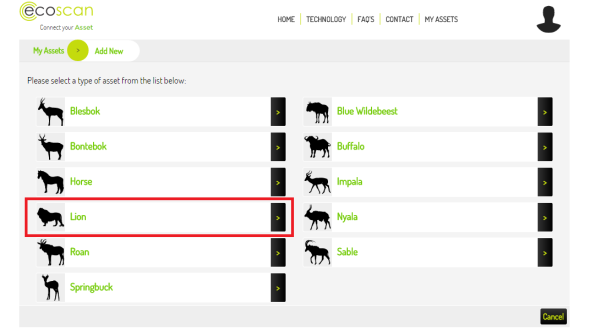 ECOSCAN is a system that Ukutula Lion and Research Center uses to sell animals on to buyers. Ukutula Lodge has also implemented into their terms and conditions one of the following rather interesting rules:
ECOSCAN is a system that Ukutula Lion and Research Center uses to sell animals on to buyers. Ukutula Lodge has also implemented into their terms and conditions one of the following rather interesting rules:
- Buyers must agree to the animal being chipped that both ECOscan and Ukutula Lodge monitor.
However what Ukutula Lion and Research Center do not tell you is that the buyer once they breed that Lion, them cubs are immune from this system. So after birth has taken place Ukutula Lodge has then distanced themselves from the questionable buyer. Meaning its “more than likely that hunting is occurring”. Lastly on checking with South African lawyers no buyer of any Lion from Ukutula does not under any circumstances have to agree with Ukutula’s terms of policies/agreements Etc. A very crafty move by an alleged Lion Research Center, one of which the public cannot easily trace that buyer too. Please view image below and click on the image to view which British Travel Agency supports it, alternatively please click >here<
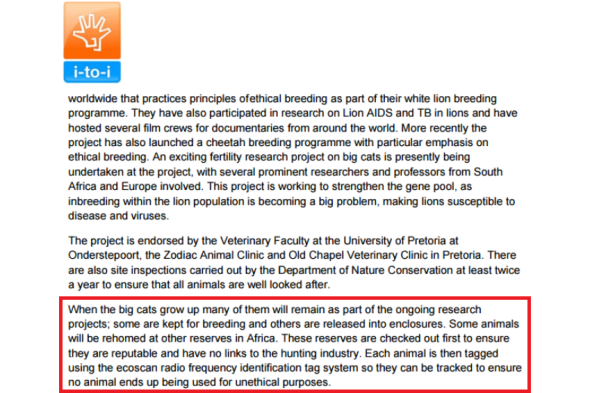
Image: Volunteer Travel I-I UK supports Ukutula Lodge that Blood Lions called into question.
Last month the South African Non Governmental Organisation, Blood Lions called into question Ukutula Lodge that refused to allow the Blood Lions team onto their property to investigate claims in relation to canned hunting. To read more on that subject please view the link below:
http://www.bloodlions.org/us-volunteer-speaks-out-cubs-hired-for-parties-and-events-ukutula/
The last thing we ever wanted to be forced to do was to begin exposing the petting industry at an angle that sees us exposing those that directly contribute to the industry that has skyrocketed over the past ten years. Unfortunately we’re being forced too. We’ve provided more than enough facts, accounts, and evidence. What or more to the point how much more evidence do students, tourists and volunteers really require?
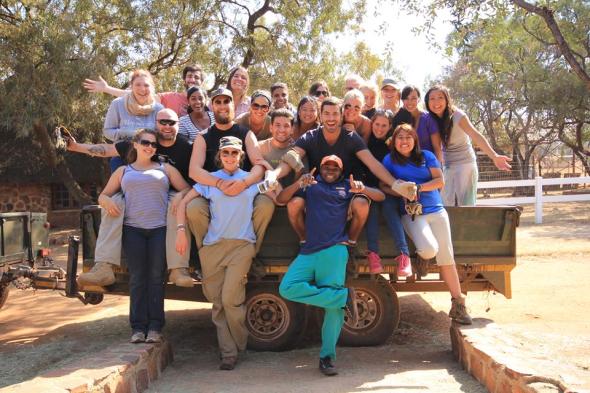
Image: Students at the Living with Big Cats Project.
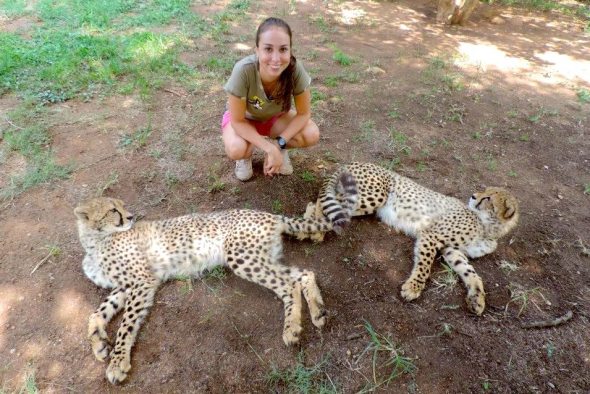
Image: Student at the Living with Lions Project.
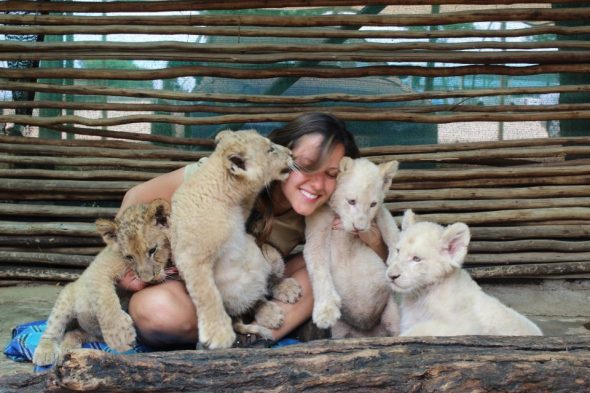
Image: Student at the Living with Lions Project.
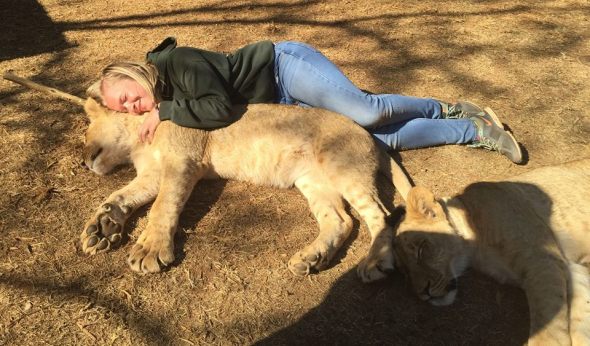
Image: Student advertised on the UK Travel Firm Amanzi Travel UK.
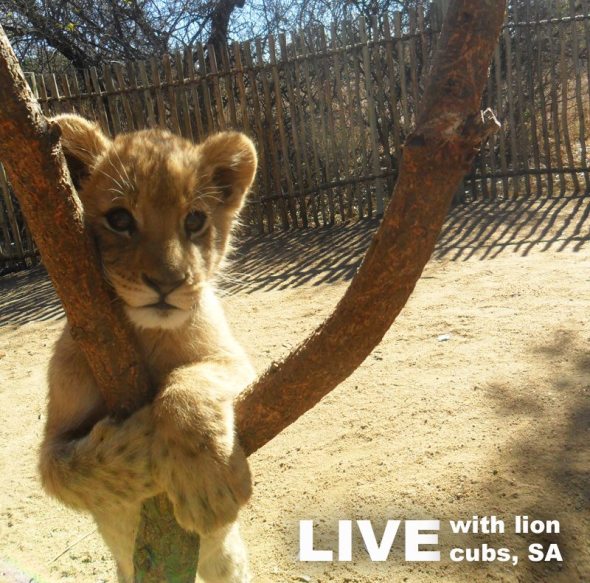
Image: Lonely cub advertised for petting at the I to I Volunteering UK agency.
No money the public spends to pet or take photos with cubs ever goes to support conservation in the wild. In fact, the opposite is true. There is a huge and growing market for Tiger and Lion parts, and Tiger and Lion “derivatives”, i.e. products made out of Tiger and Lion parts like Tiger and Lion bone wine. A dead Tiger/Lion is worth up to $50,000 for its parts. Breeding what US Fish and Wildlife Service calls “generic” Tigers like the ones used in the mall exhibits is not tracked, similar to ECOscan system used by various lodges and parks in South Africa. So there is no way to know how many born Tigers/Lions are killed to have their parts illegally sold into this trade. And, the more that trade expands, the more incentive the poachers, hunters and farmers have to kill Tigers and other big cats in the wild and via hunting within South Africa. Yes sadly, farmers and lodges, parks and alleged “living with big cats programs’ will sell after hunting (in some if not all cases) bones on to the Asiatic market to double their money. All supported by you the volunteer, tourist and student.
RECAP:
The cubs used for petting exhibits/farms Etc are torn from their mothers shortly after birth, causing emotional pain to both the cubs and the mothers. Imagine what that mother experiences after enduring the long pregnancy and finally giving birth, filled with the instincts to nurture her cubs, and then having them snatched away. The breeders take them away and have people handle them so the cubs will “imprint” on the people instead of doing what is natural and imprinting on their mothers.
And what is life like during the months they are used to make money for their owners? Cubs this age want to roam, explore, test their young muscles to develop coordination, and sleep for extended periods of time without interruption. Watch what happens during these exhibits. The cubs are repeatedly awakened so a customer can pet them instead of being allowed the sleep their young bodies need. When they try to wander they are repeatedly yanked back. And where are they when not on exhibit? Well I’m sure you can answer that question. A nursery maybe? Possibly, without the mother that is pining for her young? Just because its a cozy looking nursery means nothing.
Thank you for reading.
Dr Jose C. Depre.
Chief Environmental Officer and CEO;
PhD. MEnvSc. BSc(Hons) Botany, PhD(NeuroSci) D.V.M. Environmental & Human Science
Environmental and Animal Rescue Investigations Chief Officer.
UKUTULA: TOURIST AND STUDENT BOYCOTT.
STUDENT AND TOURIST - BOYCOTT
International Animal Rescue Foundation Africa’s Board of Directors have decided to call for an immediate tourist and student boycott of Ukutula Lodge & Lion Park (Ukutula Lodge) situated at the address below with immediate effect. Please share this data onto all friends, family, work colleagues and, anyone that you know who’s planning on visiting the Ukutula Lodge & Lion Park (Ukutula Lodge) in South Africa:
Ukutula Lodge & Lion Park (Ukutula Lodge) please click the links below for GPS and Sites.
26 of the Farm Klipkop,
JQ411,
Brits, 0250,
South Africa
GPS UKUTULA LODGE AND LION PARK
UKUTULA WEBSITE
We the organisation please encourage all members of the public to visit TRIP ADVISER and UKUTULA SOCIAL MEDIA pages and pre-warn all members of the public and provide a ONE STAR rating not to visit this lodge. This farm lodge has categorically lied to the public, are selling animals onto to hunt, and haven’t answered a single question put to them since 2013. Today 2015 after the lodge yet again tried to fool the public into airing “a recorded and cut version of the BLOODLIONS.ORG film showing what (they want to show) Blood Lions made the following statement.
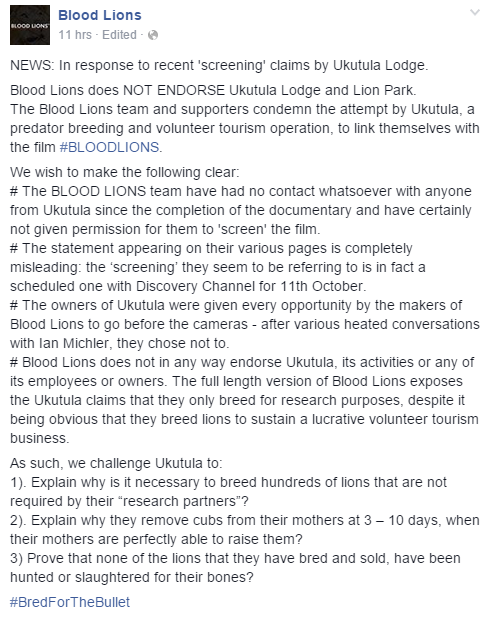
We the [organisation] have thought long and hard in relation to issuing a boycott with regards to Ukutula and their unprofessional practices operating under the guise of species research. International Animal Rescue Foundation Africa has taken in to consideration all aspects of the boycott, the implications this boycott could have on captive breeding and monetary loss. However had there not been evidence that clearly shows trade of Lions and other animals to silent partners, organisations and farms then we’d have not called for a mandatory boycott. Vasts sums of monetary income are coming into this lodge from private buyers of Lions, Cheetahs, Tigers and other animals. The farm doesn’t require funding from foreign tourists that are being lied too, brainwashed and fed misinformation, therefore a boycott must commence to shut this practice down.
Tourists and students that visit the Ukutula Lodge and Lion Park travel from the following countries: Germany; France; Finland; Holland; Denmark; Belgium; Norway; Serbia; Romania; Sweden; United States; Canada; Italy; Australia; New Zealand; Czech Republic; South Africa; Namibia; Zimbabwe; Botswana; Ireland; Portugal; Greece; Thailand; China; Vietnam; Brazil; Peru; Argentina; Mexico; Hawaii; India and Taiwan. There are likely many other countries that tourists and students are encouraged to visit too. However the vast majority are coming in from Holland, Germany, France, United Kingdom, United States, South Africa and Belgium.
Further boycotts will be called for and all boycotts with data and contact details will be posted onto our main environmental news and media site. Boycott information will be communicated to our education and youth team, as well as being communicated to all 6.1 million supporters, 400,000 of which are aligned to our Africans organisation. Any organisation or company that is aligned to Ukutula and is either promoting their services, establishment, funding their team or is actively involved in pseudo education and conservation will also fall into the international boycott too.
Environmental News and Media have identified further third parties that are actively encouraging the promotion of UKUTULA Lion and Game Lodge too identified hereto: Pieter and Brenna, Hartbeespoort and the Crafters Market of which Your Cheetah Spot company are trading images of cubs and adults to the public. We suspect that these images and other crafts sold via the company through the market via felid exploitation are providing a source of income to both the company and Ukutula. This practice is unethical and encouraging the deaths of our wildlife. The University of Pretoria are also supporting the UKUTULA Lion and Game Lodge too. We please ask that international students refrain from visiting this university that are sponsoring the work of UKUTULA. Should we locate any further companies or teaching establishments that are promoting the UKUTULA lodge we’ll be implementing them within our daily news netter ebullition and hereto on this site.
This entire game lodge is not under any circumstances teaching practical or professional conservation. What they are doing is selling animals onto silent and unknown buyers, and promoting/encouraging petting. International Animal Rescue Foundation Africa will furthermore expose tourists, students and anyone that ignores our advice and that of third party NGO’s and investigative teams.. International Animal Rescue Foundation Africa’s role is to now shut this entire establishment down. Alternatively the establishment can immediately stop their pseudo practices and continue “professional conservation” while answering our questions.
WHY ARE WE CALLING FOR A TOURIST AND STUDENT BOYCOTT OF UKUTULA?
International Animal Rescue Foundation Africa are calling for boycotts for the reasons set out hereto:
1. Promotion and interaction of felid cubs. (petting)
2. Evidence that proves cats and other animals allegedly used for research that allegedly live their life out on the grounds, being sold to private and silent buyers, organisations and farms.
3. Evidence that proves the lodge is actively involved within the hunting industry be it directly or indirectly.
4. Failure to answer straightforward and polite questions in relation to the above from ourselves, leading big cat specialists, and third party conservation organisations.
This boycott will be communicated in French, Dutch, German and Spanish. Furthermore we encourage others to please translate to your fellow friends, family, work colleagues and students.
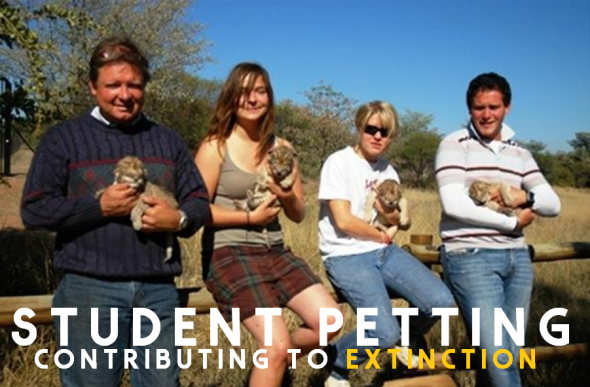
International Animal Rescue Foundation Africa will call this boycott off at anytime should we be provided with the following data.
1. How many cats from the felid family have you bred since founded?
2. How many cubs and other members of the felid family have you sold onto individual buyers, farmers, safaris, and reserves Etc. since founded?
3. To whom have you sold the above animals too under your terms for ECOSCAN? I.e. names of farms, safaris, game reserves, lodges, private hunting services, zoological gardens, individual buyers Etc?
4. Please provide any data to back your claims up that you do not support the slaughter of any animals on your farming lodge?
5. Please provide an explanation as to why you feel its necessary to remove cubs from their mothers when the mothers can rear them quite capably.
6. Are you prepared to allow independent environmental investigation officers to visit your lodge and undertake a TWO YEAR review of your scientific research, monitoring of all captive felids from the hours of 06:00am to 18:00hrs? Monday to Saturday?
7. Do you have any other land or holding facilities that are not mentioned within the public domain?
8. Are you connected to any hunting organisation, safari, reserve or other institution that promotes hunting or sustainable utilization.
STUDENT TOURIST ACCOUNT VIA BLOODLIONS.ORG
British wildlife volunteer, Keeton Hill, shares his experience and findings after his time at Ukutula farm, South Africa.
In 2013 I volunteered at Ukutula, a supposed lion conservation centre outside of Brits, Pretoria, in South Africa. For 6 months afterwards, I spoke of how great the experience was, and about how much good Ukutula were doing. Several weeks after returning from South Africa, I saw a claim that they were involved in the sale of lions for hunting. Initially, I dismissed this claim. However, after seeing more accusations, I decided to do some research to prove these claims wrong. A year and a half later, I am still yet to do so. Instead, I have only seen more and more evidence that I actually volunteered at a farm largely suspected to be involved in the canned hunting industry.
The project was booked through an agency which specialises in volunteering and working abroad. I spent 2 weeks in South Africa looking after lions. At Ukutula, volunteers were told that the lions were removed from their ‘dangerous’ parents, and hand-reared instead for their own safety. We were then told that samples were taken from the 100+ lions on the farm for research purposes, and that where possible, older lions were released into the wild.
During my two week stay, I noted several ways of doing things that I didn’t agree with. For example, there was no permanent staff member in charge of supervising the volunteers who were looking after the cubs. Upon arrival, volunteers were given a brief overview of how to care for them. As of that overview, it was up to the volunteers to decide between them who were to complete what tasks. Any authorisations or approvals were to be sought from the owners, who weren’t always available. This sometimes led to volunteers not knowing how to handle some situations, which then resulted in disagreements between volunteers. For example, some volunteers allowed young children to pet the cubs, whilst others didn’t. Some allowed guests to feed the cubs, others didn’t. There was also an occasion during which the powdered milk supply for the cubs ran out. It was a two hour wait before more was delivered. I also didn’t agree with the cubs being able to be hired for parties and events (which happened several times during my stay). Despite these things, I naively believed everything that we were told about the ‘research’ conducted at the park, and the lion ‘release’ program.
WOULD UKUTULA AND MR STRACHAN PLEASE BE KIND ENOUGH TO PROVE WHERE ALL OF THESE ANIMALS ARE NOW SHOT BY A STUDENT BACK IN 2013 IN THE VIDEO BELOW?
After the accusations against Ukutula were made, and I started my research, it became clear that these claims of releases were simply not true, and that Ukutula was far from what it made itself out to be. I realised that it operated in exactly the same way as canned hunting farms are described as operating. These similarities included a constant stream of cubs being born (there were 9 under the age of 3 months whilst I was there, with more on the way), large groups of tourists petting the cubs throughout the day, walks with older lions, and promises of the eventual release of lions into the wild (of which no evidence has ever been provided).
In order to build up a balanced and comprehensive picture about Ukutula, and find out as much about it as possible, I asked questions to a previous volunteer, a previous member of staff, and the centre’s current owner. I asked both the previous volunteer and previous staff member if they had any reason to believe that the suggestions regarding Ukutula being involved in the canned hunting industry were true. The volunteer told me that they no longer supported the centre, as they had heard several claims that lions were sold from the park (something which the centre themselves later admitted to). The staff member politely declined to comment. I then asked the current owner a series of questions, regarding why they bred so many lions, and when and where their lions are released. I was told that the centre had never claimed to release lions into the wild (which is simply not true, as myself and several other volunteers were told by the centre themselves that they do).
Since this initial realisation, it has only become more and more clear that the Ukutula lies to its volunteers and guests, has never released any lions into the wild, and that they are also more than likely involved in canned hunting. The farm admitted to moving at least 2 lions, Michael and Mandela, to zoos in the United States, and the whereabouts of several lions, such as Kevin, Kylie, Ricky, and Jenny, to name just a few, are now unknown. Attempts at finding out where these lions might be through asking members of the farms staff have proved unsuccessful, always resulting in rudely written replies, which avoid answering the question. For example, when asked the whereabouts of Kevin the lion, an Ukutula employee replied, “none of you(r) damn business”.
When I questioned the farm using an alternative email address to my own, posing as a volunteer interested in working there, they admitted that “lions are relocated in different places”. When I asked, “doesn’t that mean that the people that you send lions to could then sell them onto hunters”, the farm replied that, with a supposed “monitoring system” in the planning, this should mean that they should be “able to react to that”, but “sadly it does not mean there is a 100% guarantee”. I have also since realised that the CITES database shows absolutely no record of any lions being exported from South Africa for release into the wild in any other country. However, what it does show, is mass exports for lion trophies, lion bones, and lion skin.
I have shared my findings and opinions with any volunteers who were at Ukutula with me, and continue to attempt to inform other people who have been to the farm, as well as people that I know personally, about the canned hunting industry. Unfortunately, many previous volunteers refuse to believe about the industry, and defend the farm, often insulting or ignoring the people trying to inform them.
As the canned hunting industry is entirely legal in South Africa, creating awareness and understanding of the industry is vital, as this is one of the only ways to fight against it. The more people who know about canned hunting, the better, as this lessens the amount of unknowing volunteers who believe themselves to be doing good, which then lessens the money that these farms receive. This is why Blood Lions is so important, as it could finally be the large scale exposure of canned hunting that is needed to educate people about the canned hunting industry, as well as maybe even changing the terrible fate of South Africa’s captive-bred lions.
END OF TESTIMONY
One of the most upsetting images is that from 2013 that depicts famous singer Kylie Minouge (pictured below) petting a Cheetah cub at Ukutula that has been removed from its mother (hardly a good example to set to our children or young wildlife conservationists). Many of the students whom travel to work at this Lion and farm lodge are often told that cubs have to be separated from their mothers as the mothers are “allegedly to dangerous” and could attack or do attack the cubs.
This seemingly irresponsible advice comes from a wide range of fake conservationists that work at the facility. One in particular Mr Alan Strachan whom runs the company “Your Cheetah Spot“. Scottish born Mr Strachan that works at the Ukutula Lion and Game Lodge actively encourages people to interact with Cheetah cubs, has been witnessed man-handling the Cheetah cubs, and provides the same excuses as most staff. “The cubs are ill, cannot be released into the wild or are suffering from a wide range of tendon or ligament problems (hence why they can all walk) and look (more than healthy).
If your still thinking on visiting and taking part in the petting of cubs of which you have been told these animals are introduced into the wild. Then ask yourselves this. Why are these animals in the video below that are allegedly “so dangerous” being hand fed, and are more than tame? But more importantly can Ukutula provide evidence to back their claims up that these animals in the video below and depictions above are not dead, or ANY of the females that are sold then bred producing cubs thus not falling under “Ukutula’s ECOSCAN policy” are not then killed for the canned hunting and the trophy hunting industry? Many hunters will try and tell you that this unethical practice is helping to increase populations of Lions. So in that case please do visit the IUCN Red List and look up the Panthera Leo, can you see anywhere in this data that proves such activities are helping Lions or any cat population increases in the wild? OPEN YOUR EYES!
“DON’T BE FOOLED BY CUTENESS OR FOBBED OFF WITH EXCUSES”
Dr Jose C. Depre
Chief Environmental and Botanical Officer.
Chief Executive Officer.
Con in Conservation?
Contrary to popular belief native Africans were not the first people on the continent to pursue a career or “sport” of trophy hunting. The history of trophy hunting dates as far back to the early 1800’s when southern and central European hunters sought out large or small game. Not much has really changed since the early 1800’s although hunters did out of mutual respect show much veneration to their kill more than today’s modern hunters that flock to the continent of Africa from far and wide in their droves.
Southern and central European hunters were known to keep the trophy head or entire animal as a sign of prowess however did leave much waste of which little of that waste was provided to local villagers and communities struggling financially or in times of famine when free food was much sough after. Today most professional hunters (PH) or outfitters allege that their trophy kill’s are evenly distributed out to the local communities and villagers in dire need of food.
Today in most of Southern Africa we see a mixture of international citizens hunting animals from lion, elephant, zebra, cheetah, impala down to hippopotamus and plains game. The vast majority of hunters visiting the continent range from northern Europe where hunting has long been associated with their history. Back in the 1800’s northern European hunters within their native range would mostly hunt for meat and in Africa evidence has shown that the majority of northern European hunters do indeed demand their kill or any waste is equally handed out to local villagers and communities. After all its their tradition and a tradition in northern Europe that is steeped in history.
Sport hunting has long gotten up Animal Rights Activists noses which today’s hunting generation rarely follow any rule of the land or continue to practice the family tradition as if its a heirloom. Environmental researchers from the Environmental News and Media team have long argued now that western disrespect within today’s hunting generation is now rubbing off onto our own African citizens that have been witnessed killing animals then parading the parts of bodies of animals or jokingly fooling around with the corpse as if it was nothing more than a piece of shit on ones shoe.
One such hunter witnessed back in 2012 that our investigative team noted last year named as Mr Henning Pretorius from Krugersdorp Gauteng, South Africa didn’t just grotesquely slaughter this non-threatened Zebra below - he then set about jumping on the animals dead back jokingly fooling around and acting as if he was on some rodeo. Hardly professional hunting nor conservation. We will though give him his due respects where given of which the animal was slaughtered - however made into a rug for his own home. The meat was distributed among family members and friends which back in the 1880’s was uncommon.
Since Henning pretorius became aware of this image circulating Mr Pretorius not only demanded its removal but, has been given special cyber protection - I.e his profile has been blocked from the United Kingdom. We do find this move by Facebook rather peculiar as 1. we’re not British citizens or even residents and 2. why has he been given this rather suspicious preferential treatment? Did we touch a sore nerve. Mr Henning has also taken the rather unusual step of removing this image or at least concealing it amidst his other nauseating images that Facebook’s administration platform seems to be protecting.
Kalahri’s Historian on hunting and Animal Rights stated:
Trophy hunting is the most controversial aspect of hunting for opponents of hunting, who argue that modern economics or vegetarianism should eliminate the need for most killing of animals, if not animal domestication entirely.
They see such killing as an issue of morality, citing British fox hunting as an especially inhumane “blood sport.”
Hunting in North America in the 1800s was done primarily as a way to supplement food supplies. The safari method of hunting was a development of sport hunting that saw elaborate travel in Africa, India and other places in pursuit of trophies. In modern times, trophy hunting persists, but is frowned upon by some when it involves rare or endangered species of animal. Other people also object to trophy hunting in general because it is seen as a senseless act of killing another living thing for recreation, rather than food.
In all due respects Henning and Kalahari are nothing more than a CON in Conservation.
Africa holds the largest custodian of lions in the world. However their populations are dwindling quite rapidly. To date and based on the most recent up to date International Union for the Conservation of Natures report a population count of some 30,000 lions remain in the wild. Listed as vulnerable and nearing endangered they remain the second species within the big five that’s populations are actually declining. Central African elephant “populations” could be considered within this count too however based on census reports elephant populations within the central African republic are known to be “endangered” as a population not as an entire species.
The African lions main threat is that of habitat destruction and human species conflict with some reports of “unregulated hunting” as being problematic mostly within Tanzania. However while the IUCN lists certain dangers regarding the lion such as habitat destruction, persecution and unregulated hunting they fail to list the dramatic decrease of male African lions that are required within the prides to keep species intact. Continued hunting of males lion or even female lionesses will eventually have an adverse effect onto lion populations thus pushing this species into the realms of endangerment.
Environmental News and Media has duly noted from 2011 to 2014 a stark increase of eastern and southern European hunters visiting Africa to hunt the big five. Increases from Ukraine, Russia, Czech Republic, Poland, Romania, Slovakia, Serbia, Bosnia and Turkey have been noted. More worrying are increasing numbers of trophy hunters such as Jacine Jadreško from Croatia (pictured below).
Croatian, Albanian, Russian, Czech Republic and Polish trophy hunters are second to that of American hunters with British hunters slowly creeping up. While sport hunting is not currently considered a major threat to the species, habitat loss, a lack of prey and increasing conflict with humans are to blame for the decline in the numbers of African lions, whose numbers have dropped by two-thirds since the 1980s, according to 2014 USDA report. There were 76,000 lions in Africa in 1980, but that number has declined to about 30,000 today.
Zambia has since lifted the ban on hunting lions and cheetahs. The ban wasn’t lifted because lion and cheetah species populations began increasing but more for sustainable wildlife projects. In other words while the ban on hunting was in place funding to secure wildlife from poaching just didn’t hit the target - so - therefore Zambia has limited the ban to generate funding to preserve its natural wildlife.
A Con or practical thinking?
Environmental News and Media’s External Affairs Investigations Dept noted a stark and worrying increase of youth hunters to the continent too. Most African countries hold certain rules in place the forbid a minor under the age of sixteen from carrying or even shooting a loaded rifle. As one can see in the case below this is not so. From Howick, Kwazulu-Natal laws are being flouted daily.
Con or gun conservation?
A further worrying trend were witnessing in South Africa are tiger farms springing up everywhere in the Eastern Cape - for the gun. From 2012 to 2014 Environmental News and Media recorded a total of 63 tiger farms in the Eastern Cape. Since 2012 a further 21 have been established. Tigers are listed as critically endangered - yet are bred and for the gun.
One of the world’s largest and most iconic predators may soon go extinct in the wild - yet in South Africa the species are being bred for for the bloody gun!
Amid all the fuss over global warming and alternative energy, the continued loss of biodiversity is being largely overlooked and forgotten. And the trend may claim its highest profile victim to date in just a couple decades, say conservation groups. For at least a million years tigers have roamed the forests and jungles of Asia, ruling the top of the food chain. But today Tigers are facing a final bow from the world they once ruled as their habitats have been destroyed and their numbers slashed by poaching.
At the start of the twentieth century there were an estimated 100,000 tigers. Over the course of the last century those numbers shrank and several subspecies — the Bali, Javan, and Caspian Tigers — went extinct.
The WWF has released a new report estimating that there are now only 3,200 tigers left in the wild in India, Southeast Asia, Russia, and China. They estimate that within a generation tigers will become extinct in the wild, if drastic action is not taken to conserve them.
Sybille Klenzendorf, director of the WWF-US species conservation program comments, “There is a real threat of losing this magnificent animal forever in our lifetime. This would be like losing the stars in the sky. Three tiger subspecies have gone extinct, and another, the South China tiger, has not been seen in the wild in 25 years.”
World Bank, a multinational financial institution that provides loans to developing countries, is partnering with the WWF in a push to save the beasts.
Keshav S. Varma, program director of the World Bank’s Global Tiger Initiative comments, “Unless we really crack down on illegal trade and poachers, tigers in the wild have very little chance. If the tigers disappear, it is an indication of a comprehensive failure. It’s not just about tigers. If you save the tiger, you are going to save other species. It provides an excellent indicator of commitment to biodiversity. If they survive, it shows we are doing our job right. If they disappear, it shows we are just talking.”
Despite the fact that so few tigers remain, demand for their body parts is at an all time high on the Asian black markets. Crawford Allan, director of TRAFFIC-North America, which monitors the trade in wildlife, comments, “The demand for bones and skin, meat, and even claws and teeth … is driving a major crime campaign to wipe tigers out in the wild.”
Lixin Huang, president of the American College of Traditional Chinese Medicine has teamed with the WWF to try to fight Chinese natives from using tiger parts in their traditional remedies. States Huang, “Traditional Chinese medicine does not need tiger bones to save lives. What we are dealing with is an old tradition, an old belief that tiger wine can make their bones stronger. That is not medicine, that is from old tradition.”
The WWF’s ambitious goal is to try to get the tiger population doubled to 6,400 tigers in the wild by 2022. To do that, they say they will need $13M USD a year and cooperation from the governments of Bangladesh, China, Europe, India, Indonesia, Nepal, Russia, the United States, Vietnam, and the Greater Mekong region, which stretches across Cambodia, China, Laos, Myanmar, Thailand and Vietnam.
Nearing extinction in the wild - Bred in captivity in South Africa for the gun.
Hardly Conservation is it?
Why are we still hunting Elephants for - Adrenaline Junkies.
As the elephant took a mouthful of food the hunter pulled the trigger exploding a bullet into the back of elephants head leaving this magnificent beast writhing on the ground in a pool of its own blood. What a cowardly bastard.
Why are we still hunting elephants for? This is a question I constantly ask oneself, why? What encourages a hunter to hunt Elephants for? Power, adrenalin, or the fear than an elephant could kill the hunter?.. Much research I undertook about hunters back in the 1990’s revealed that many hunters feel the need to hunt (dangerous game) due to the thrill and rapid adrenalin rush, the cardiac muscle beats faster and harder, surges of hormones are released and the “type” of sexual gratification which has been said to be addictive continues to push hunters to kill more and more.
Back in 1994 I researched a group of American game hunters from Dallas Safari Club. I found in my research that vast surges of adrenalin was mainly responsible for hunters hunting larger and more dangerous game [this of course is not uncommon to most people]. The “adrenalin rush” is in a sense though addictive especially when in the heat of the moment or leading up to a “fight or flight scenario”. In medical terminology we better describe this type of behavior as Impulse Control Disorder (ICD) which is a class of psychiatric disorders characterized by impulsivity – failure to resist a temptation, urge or impulse that may harm oneself, others or in this case the “impulse to kill more dangerous and bigger” game.
These “type” of psychiatric disorders concern oneself more than say those whom have been abused. Furthermore are these type of psychiatric disorders the reason why so many more game hunters are entering Africa to kill. Lastly while the hunter is lavishing within the trills of killing does such killing displayed in videos such as YouTube encourage other people not within the hunting theater to become active in the killing fields? The answer to them two questions is yes, to what extent though I and Professor A. Ball are still investigating in great depth. I’ve included a YouTube video for you to better understand what I am explaining.
As one can clearly see within the video the hunt is very action packed, emotionally charged and driven, one can just feel the edge and thrill. This leads me to my next issue and question which is - why are online video sites such as YouTube allowing such imagery to be broadcast? Research has already proven as of 2010 that large and medium sized game from lions to elephants, antelope and giraffe for instance are not as densely populated within Africa as they were over two decades ago. Hunting activities have been noted to have dropped quite significantly.. Not because activism is stopping hunters or even restrictions but literally because there have been major reductions in wildlife populations over the course of the past twenty years..
Keeping to the main subject many psychiatric disorders feature impulsivity, including substance-related disorders, attention deficit hyperactivity disorder, antisocial personality disorder, borderline personality disorder, conduct disorder, schizophrenia and mood disorders. Please note that I nor my colleague are labeling any hunter or huntress with any form of mental illness, disorder or disease[s]. We are merely both stating that many hunters we have interviewed such behavioral characteristics have been noted. Hunters are not the only people that can suffer from adrenalin addiction or Impulse Control Disorder, everyone can at some stage in their life suffer from such neurological disturbances, disorders or addictions.
We can all relate to such hormonal and chemical discharges within the brain and body when we were children for example, many youths would feel such rushes of adrenalin within their childhood: Examples of this can be stealing money, their first kiss, sexual activity or as explained participating in an activity that is either immorally wrong or incredibly dangerous.
2004 I researched weather adrenalin was either “psychologically addictive or physically addictive” within youths and weather such addictiveness then spurned youths through their adulthood to then move onto more dangerous activities such as murder, rape, burglaries or in this case large game hunting. Our research thus far has proved such cases of early adrenalin addictiveness and Impulse Control Disorder does in deed in many cases if not monitored or treated later leads to more dangerous activities carried out simply for the sheer “rush or natural high”.
Research carried out by previous consultants and scientists had already proved adrenalin was in a way (psychologically addictive), however never did the research focus on weather such addictiveness spurned individuals in the trophy hunting industry say, to then move onto more dangerous game or even murder. Within this brief article the attention focuses on what drives a trophy hunter to kill more larger and dangerous game, the thrills they obtain and the after-effects of such behavior. The article is not focusing on mass murder, abuse, or anything other than what has been explained.
Myself Dr Jose Depre and Professor Adriana Ball consultant Forensic Psychiatrist have now completed our findings on [What spurs a hunter to kill].. This research document (to be released soon in the Online Scientific Studies of Neurological Disorders in Sweden) 1/6 was aimed at showing other examples as to why trophy hunters hunt. Article [4] details children that were abused that then become the abuser will hopefully be released this June. Please note this is not the title of the 4th article and should one wish to purchase that article in paper back you will need to contact myself nearer the time when I release this book in leading high-street stores..
So is it correct to say that adrenalin is an addictive chemical release that can lead an individual say a trophy hunter, in this case to turn into a dangerous game hunter? Furthermore like opiates or illicit narcotics when one becomes use to the highs of such neurological and/or synthetic pleasures will the individual turn to more dangerous and destructive activities, is adrenalin in its self additive too? Indeed it is of which can be quite difficult for a sufferer to overcome, furthermore failing to treat the sufferer that is clearly on a mission to kill more and more then its quite right to say that adrenalin can lead to more destructive activities being played out. Would this be then the main reason as to why hunters that start of killing small game then go on to killing larger and more dangerous game, in this instance elephants?
The answer to that question is yes. Its quite wrong though to state that “trophy” hunters whom kill animals kill because they were abused as children, or have small penises, lack femininity and masculinity, or need to prove oneself. While there is evidence relating to such human past and present behavior regarding abuse and lack of say (masculinity) there is by far more evidence within the scientific world that indicates and proves hunters can suffer from Impulse Control Disorder or are addicted to adrenaline and noradrenline which are two separate but related hormones and neurotransmitters.
I myself would be more concerned about an “unstable” hunter that is suffering from (ICD) and/or addiction to adrenaline and noradrenline than say, an unstable hunter that needs to prove oneself, or has been abused as a child. Child abuse indeed “may” lead to more sinister and violent activities carried out by the abused however counselling and cognitive therapy can in many cases solve these problems if caught in the early stages before onset of serious mental illness. Proving oneself or weather the individual feels they lack masculinity or femininity is easily treated again with therapy, of which is more a low key behavioral and complex problem treated by a Psychologist rather than a Psychiatrist. Medication is rarely required too.
While the elephant is indeed the prime catch for many experienced hunters and huntresses, the main reasons trophy hunters, say, will hunt is literally for this sheer addictive pleasure of knowing they’re pushing dangerous limits.. In a way one could say that hunting dangerous game is more identical to ones first time stealing from a sweet shop, or being dared by a mate to do something that is either dangerous or very wrong.. Like small game hunting the thrill and adrenalin is there and identical to that of stealing, both hunter and common thief feel the urge after their first mission to push for bigger and better trophies, the need to fulfill ones inner desires is a crave that in itself is very addictive.
Over the past fifteen years I have interviewed many hunters and poachers around the globe of which in my findings I have found that most hunters and illegal poachers that start of with say, small game suffer from as explained Impulse control disorder and adrenaline addictiveness behavioral problems. What I myself did note is that these “obsessive behaviors” seem more related to (trophy hunters) rather than (hunters for food). Trophy hunters are themselves hunting for the sheer thrill while (hunters for food) take only what they require. Furthermore there was quite a lack of “obsessive characteristics” in poachers - which is mainly because they themselves are either being given the order to kill say a Rhino or elephant.
This infant elephant was hunted for what reasons we’ll never fully understand. The elephant posed no threat, it wasn’t a problem animal, in pain nor suffering. There is no real trophy to take home, no tusks, Why?
Elephants are to myself a magnificent gentle giant that has roamed the plains of Africa for hundreds of years. Identified by Dr Blumenbach in 1797 the species listed below killed by Mr Jofie Lamprecht being the African Elephant scientifically identified as Loxodonta africana has been hunted now for hundreds of years. This particular hunter caught my eye, not because of the fact he slaughtered this colossally sized African elephant but more the speech he made after the killing aka [trophy] hunt.. That speech can be read below which is typical and classical behavior of an individual suffering from Impulse Control Disorder and adrenaline addictiveness behavioral problems.
The speech reads:
I honor you my friend. I will follow your round and oval until the end of my time. May your presence in the wilds of Africa continue so that generations from now my prodigy may view your glorious splendor and hunt you like I have had the privilege of doing. Thank you for walking the trails of Africa. Thank you that I can hunt you. Your protein now fills the bellies of many in the surrounding villages. The money you generated will in good faith preserve these wild lands there you walk for your prodigy to be safe and grow old.
Farewell my friend. I will join you when it is my time.
The speech is classical to that of the war with Veii and the Etruscans, under Servius Tullius of which the Rome’s sixth King Servius Tullius went to war with Veii (after the expiry of an earlier truce) and with the Etruscans. King Servius Tullius like many Roman warlords had to prove themselves -fight to the death, after fighting such a glorious and splendid battle did they then lay down their arms and celebrate with a triumph speech. Mr Jofie Lamprecht is in reality no different to King Servius Tullius - however King Servius Tullius was more gentleman like.
Many people have problems that occur repetitively, disrupt their lives and seem completely out of control. Sometimes we’re asked if these problems are examples of obsessive compulsive disorder (OCD). And indeed, there are some similarities to OCD. Nevertheless, these problems are not considered to be in the same category. So what are we talking about here? Specifically, we’re referring to the category of emotional disorders known as Impulse Control Disorders. The similarity to OCD is seen in the fact that impulse control disorders, like OCD, are repetitive and very difficult for the person to bring under control. Furthermore, like OCD, they greatly disrupt and impair the sufferers’ lives. However, Impulse Control Disorders also differ from OCD in important ways. Impulse Control Disorders, unlike OCD, often do not cause a great deal of distress to the person who has them—that is, unless or until legal authorities are called in. Furthermore, distress, anxiety and upset do not play a very large role in most Impulse Control Disorders. In fact, many of those with Impulse Control Disorders actually report feeling pleasure from their behaviors even though their lives are impaired by them.
When I myself and Professor Ball interviewed all hunters not one hunter showed any signs of distress, anxiety and upset, the last of the hunters whom we interviewed this past month hadn’t hunted elephants or dangerous game such as elephants or lions, rhinos or wildebeest.
No empathy or guilt was shown when they were shown images and videos of other hunters killing. However what was shown on the sudorometer and electrocardiograph was increased heart rate and perspiration which indicated to ourselves that the interviewees were feeling excited. When shown video imagery from YouTube levels of sweat and heart rate increased by 2.5% When asked if “If you had the chance to hunt an elephant now would you do it?” 19/27 hunters said yes. So in reality when we question ourselves why are we still killing elephants, or any dangerous game its quite right to say programs on television and YouTube really are not doing our wildlife any form of good. For example if your shown a video of a chocolate bar advertisement from which you’ve never indulged in that sweet the chances are “that advertisement” will encourage you to purchase that sweet.
The full results of the above examination and all test experiments will be released later this year.
Looking at our past we can also see that elephants were not just hunted for the sheer fun of it..The main reason that elephants were hunted was for their ivory. This is worth a ton of money and so huge numbers of elephants were slaughtered in order to be able to cash in on such a business. With each tusk weighing up to 200 pounds, this was amazing. Early attempts to remove the ivory tusks and to leave the elephants alive didn’t work. The elephants were simply too aggressive for this type of process and it was too dangerous for humans to take part in.
Elephants are taking quite a hit all over Africa and its quite evident from past research and present researching “why” elephants were and still are legally hunted. One cannot just point the blame at natural neurological issues though as I myself have explained, above I’ve clearly detailed why [we still are hunting] from past to present but more from a different perspective of things.
Moving back to just how big a problem adrenalin addictiveness and Impulse Control Disorder’s can be - curing such disorders that are quite natural is more easier said than done. At the end of the day its down the individual hunter and huntresses to come forward should they feel they have an “obsession” or (ICD). One cannot force a hunter to visit a therapist however what we can do is make aware the problems that some hunters if not all believe is quite actually typically normal behavior. One very good article that I do suggest people read is that of Serial Offenders which details much of the above in this book, however its very broken down. Read more here.
Excessive adrenaline build up changes a trophy hunters physiology. The trophy hunter becomes sensitized to the epinephrine and used to what it does to them. Initially it may be difficult to cope with, but after awhile, the individual becomes so accustomed to it that you can function. This is not always the case though as it has been noted adrenaline junkies feed of such fear which in turn provides a type of sexual gratification afterwards and relaxation. Adrenaline sends your brain into full throttle and your wit becomes majorly amplified. This is because your slower brainwaves in the alpha and theta ranges become severely diminished. Alpha rhythms are drowned out by high amounts of mid and high-range beta brainwaves. This leads to further production of dopamine, epinephrine, and cortisol. Trophy hunters have long stated that the majority of the time they hunt is not for the actual trophy but more the “adrenaline hit”.
Author Louis Schlesinger quoted as Professor Ball did “emotional, impulsive murderers are less able to regulate and control aggressive impulses”. If you’ve being paying attention and scroll back up to the very top of the article one will read very identical characteristics relating to narcissistic psychopathic murderers to that of those whom kill large game, dangerous game and small game…
Treatment of Impulse Control Disorders has lagged behind the treatment of many other emotional disorders such as depression, anxiety, and obsessive compulsive disorder. There are some indications that treatments such as Habit Reversal Training may have value for Trichotillomania. However, most of the Impulse Control Disorders beg for more research on potential treatments. Of course, even if we had a plethora of effective treatments, there’s still the problem that most of those with Impulse Control Disorders aren’t all that interested in getting help. Sigh.
Why are we hunting Elephants again?
Thank you for reading - Stay tuned for my book on Impulse Control Disorders and Trophy Hunting.
Dr Jose C. Depre Md, VetMed, EnvStu, Phd
Can hunting lead to Species Extinction?
Its a topic that we see spoken about within many animal rights and conservation debate forums, can hunting lead to species extinction? The answer is yes hunting can if not monitored lead directly to species extinction.
The many arguments that quote Cites can help stop species from extinction is not really valid. Cites - Convention on International Trade of Endangered Species does not cover the entire globe.
To date there are a total of one hundred and sixty member states (2013) that are bound by the Cites agreement. So in not so many words hunting can be (restricted) however this doesn’t mean that the member states have to agree with what Cites and other member states call for. Cites was established back in the early 1970’s of which has seen many species of animals and plants preserved. One must remember though that hunting is not the real threat to animals, humans are via over populating that leads to mass habitat fragmentation in many ways. Increased farming, urbanization and depletion of natural resources such as wood have had quite a profound affect to many species of plant and animal.
Case Study #1
Identified in 1826 by Cretzschmar - Oryx dammah.
(Extinct within the wild)..
O. dammah
The Oryx dammah is only extinct within the wild. However, 14,636 km away the Oryx dammah is not extinct on US ranches?, 14,636 km on a private farm in Texas these adorable mammals are trophy hunted. One would think that the farm would actually create a captive breeding program to reintroduce species of O. dammah back in the wild of Northern Africa.
Back in the 1960’s a global captive breeding program was launched when it was finally documented that hunters had literally over hunted the species into extinction. At the same time the African black and white Rhino was bordering extinction however won a reprieve, sadly even they are no longer safe bordering tipping point.
In 2005 a captive breeding assessment showed around some 1,500 individuals of O. dammah within captivity. From 2000-2007 the species was formally identified as completely extinct within the wild. In Chad and Niger it was estimated that a mere five hundred individuals were known to still be living within the wild from 1985. Scimitar horned oryx (common name) is regionally extinct within Algeria, Burkina Faso, Chad, Egypt, Libya, Mali, Mauritania, Morocco, Niger, Nigeria, Senegal, Sudan, Tunisia and the Western Sahara.
Hunters can agree or disagree. The evidence is clear today as it was back in the mid-1980’s when the species was formally assessed as (critically endangered).. Hunters are responsible for pushing species of mammal whether it be the Lion or the O. dammah into extinction. What really concerns International Animal Rescue Foundation’s conservation team is that environmental departments and enforcement agencies were fully aware many species of animals are threatened from human selfishness. Cites was not aware as the treaty was only drawn into practice back in the early 1970’s. Had the Convention on International Trade of Endangered Species that hosts some 160 member states been made aware of the plight of the O. dammah its quite possible they’d still be living within the wild.
Environmental departments on the African continent knew the O. dammah populations were being seriously depleted. So did international agencies. The O. dammah could have been taken into a secure captive breeding program way sooner than the 1960’s and/or protective secure parks established and manned to secure the species within the wild.
Over-hunting and habitat loss, including competition with domestic livestock, have been reported as the main reasons for the extinction of the wild population of Scimitar-horned oryx. Hunters still to this very day propagate unproven data stating the O. dammah is still pretty much alive within the wild. You’ll find that most of these hunters are either cattle ranchers that have never visited our Mama Africa or keyboard hunters that take facts from various sources outdated or unproven.
International Animal Rescue Foundation - Africa located seven ranches inside of the United States that allows tropical hunting of the O. dammah. One ranch we contacted we asked if they would be willing to ship out to Africa a dozen O. dammah for breeding yet we was informed the cattle were only hunted for trophies. Even with money talking not one ranch was willing to comply. (Please note we do not own a captive breeding facility)…
Cattle Ranches in Texas sell for hunting O. dammah Yearling Heifer/Bull priced at $800.00USD, cows as $1,100.00USD and bulls up to 36 inches at $1,300.00USD.. All included - to hunt sets you back a staggering $3,250.00.
Regardless of what hunters state there has been no definite evidence of the survival of this species in the wild for more than 15 years. Yet speak to a few Texan hunters and they’ll inform you otherwise. Sporadic reports of animals sighted in Niger and Chad have never been substantiated, despite extensive surveys dedicated to detection of Sahelo-Saharan antelopes carried out in Chad and Niger in 2001-2004.
It is sadly a fact that hunting whether it be trophy hunting or hunting for bush-meat has contributed to the extinction of this species within the wild. Any hunter that states no species of animal has ever been pushed to extinction within the past twenty years other than the Dodo and Tasmanian Tiger are bare faced uneducated liars that lack any form of conservationism education as their only type of conservation is keeping numbers down commonly known as “hunting” - Its hardly conserving any form of animal.
Case Study #2
Identified in 1866 by Milne and Edwards - Elaphurus davidianus
(Extinct within the wild)
E. davidianus
This species is listed as Extinct in the Wild, as all populations are still under captive management. The captive population in China has increased in recent years, and the possibility remains that free-ranging populations can be established some time in the near future. When that happens, its Red List status will need to be reassessed.
So here is that hunters (propaganda again) within many debates that we read within Animal Rights and conservation forums. The average hunter still argues that no animal has been pushed to extinction via hunting within the past two decades or less. Back in 1990 the Pere David’s Deer as it is commonly known was listed as (endangered). Cites that was well established back then knew this species of deer was facing extinction so did all member states as well as enforcement agencies and Department of Environments yet done nothing to preserve its status until now.
From 1994 the Pere David’s Deer was re-listed as endangered. From 1996 the species was listed again as (critically endangered). Sometime from 1980-1990 the species was re-listed as completely extinct within the wild of which prompted conservation agencies (only when we’d lost the species in the wild) to then begin a captive breeding program. Thankfully and after much success captive bred numbers have increased to over two thousand individuals. What was the main cause for their extinction within the wild?
The species became extinct in the wild due to habitat loss and hunting. The size of the reintroduced population was only 120 in 1993, although has increased to over 2,000 since that time. Low genetic diversity has been identified as a long-term threat by Zeng et al. (2007) and Yang et al. (2008). It is unclear how much native habitat remains on which E. davidianus can exist in a free-ranging state. Is it possible that the species can be reinstated to live freely within the wild? We believe so however to what extent they can remain (wild) within the (wild) is another story.
Would a reintroduction program of the Pere’s David Deer work though? I the Chief Environmental Officer Dr Josa Depre question this time again regarding many species of “horned” mammal that are currently threatened. So, we take a look at why the species E. davidianus was threatened? Firstly blaming US or any overseas hunters is not primarily to blame here. One only has to look at why the species was pushed into extinction to ascertain whether it is actually practical or even professional to reintroduce the species back into the wild of China from which it is endemic too.
Firstly I do not believe in the current climate of poaching and black market wildlife trade that reintroduction of the Pere’s David Deer is practical. E. davidianus was hunted mainly by Asian hunters legally and illegally. Hunted to extinction within the wild mainly for its fur, skeletons, meat, glands and derivatives. if one researches you’ll locate evidence of the Pere’s David Deer used in (TCM) commonly known as Traditional Chinese Medicine. This particular deer was hunted mostly for its glands and skeleton. Musk is wildly used within the far east as a Traditional Medicine and for the use of perfumes (internationally) that sell for hundreds of dollars. However and as shocking as this may read the Pere’s David Deer was hunted for its skeleton for the production of bone wines that is said to enhance sexual pleasure in both men and women.
However we cannot just lay blame here all on the Traditional Chinese Medicine trade. Hunters from all over the globe hunted the Pere’s David Deer mainly for its large and well formed antlers. Furthermore locals and Asians outside of China also hunted the deer for its meat known to be aromatic and tender.
Populations of the Pere’s David Deer are now increasing within (captivity).. Currently, there are a total of 53 herds of E. davidianus in China. Nine herds have fewer than 25 deer, 75.5% have fewer than 10 deer (Yang et al., 2003). Such a small herd size raise question about the effective population size and health of population genetics, since those herds are isolated and there is no gene exchange. The artificially dispersed E. davidianus herds are similar to a meta-population. The viability of the meta-population depends on the man-made gene exchange process by the managers.
Concerns via the International Union for the Conservation of Nature 2009:
A quarter of all antelope species are threatened with extinction.
The results, compiled by the Antelope Specialist Group of IUCN’s Species Survival Commission, show that out of 91 species of antelope, 25 are threatened with extinction. The status of several species has become worse since the last complete assessment of all antelopes in 1996.
“Unsustainable harvesting, whether for food or traditional medicine, and human encroachment on their habitat are the main threats facing antelopes,” says Dr Philippe Chardonnet, Co-Chair of the IUCN Antelope Specialist Group. “Most antelopes are found in developing countries which is why it’s critically important that we collaborate with local communities there since it is in their own interest to help preserve these animals.”
Five species of antelope are in the highest category of threat, Critically Endangered, including the Dama Gazelle (Nanger dama), Aders’ Duiker (Cephalophus adersi), the Saiga Antelope (Saiga tatarica), Hirola (Beatragus hunteri) and Addax (Addax nasomaculatus). The Scimitar Horned Oryx (Oryx dammah) is already Extinct in the Wild, but there are ongoing efforts to reintroduce it. The Dama Gazelle and Addax are both reduced to tiny remnant populations and highlight the dire situation for wildlife in the Sahelo-Saharan region.
A further nine species are in the next category of threat, Endangered, and another nine are classified as Vulnerable on the IUCN Red List of Threatened Species.
Nearly 70 percent of antelope species are not threatened with extinction and some areas of the world are doing better than others in terms of antelope populations. India, for example, is home to four species of antelope and only one of them is currently regarded as threatened.
“Despite the pressure of living alongside 1.2 billion people, antelopes are doing well in India,” says Dr David Mallon, Co-Chair of the IUCN Antelope Specialist Group. “It is no coincidence that there is very little tradition of hunting in India and gun ownership is rare.”
Overall, populations are stable in 31 percent of antelope species and decreasing in 62 percent of antelope species. The Springbok (Antidorcas marsupialis) a native of southern Africa is the only antelope species with a long-term increasing trend, mainly as a result of the game ranching industry.
Conclusion;
Today I have written this article for the many hundreds of Animal Rights Activists and Conservationists in training that are constantly put down by hunters for being “thick” knowing little about what they are actually debating about. Frankly I could go on and submit here another twelve species of mammal and several species of plants that have gone extinct within the wild caused primarily by human hunters and traffickers. Whether it be hunting for food, hunting illegally for the animal parts trade or trophy hunting the answer to the title Can hunting lead to species extinction even with Cites established is quite rightfully yes. My main beef here is that Cites and Governmental Environmental Agencies are fully aware of the many species of land and aquatic mammal that are facing extinction or seriously threatened within the wild. Yet have done little or nothing at all to conserve threatened species. Hunting does and has lead to many species of plant and animals going extinct. The Lion, Rhinoceros, Pangolin, Cheetah, many species of bird and Sharks even trees are all facing extinction within the wild and its hunters, poachers and traffickers that are all to blame. Whether hunting is legal or not without adequate and professional monitoring “any species of mammal or plant” can quite quickly vanish from under our noses.
While the two species above and some sixty nine species are formally extinct within the wild they are at the moment the very lucky ones. Conservation programs are at their very best helping to conserve the known sixty nine species of animal and plant. However there are a total of eight hundred and twenty eight recognized species of animal, fish and plants that are already extinct.
Extinction Means Forever..
If you would like you a fact a sheet on this article or wish to know more please contact myself or my Senior Environmental Officer at - [email protected].
Dr Josa C. Depre
Environmentalist and Botanical Scientist

